Review ASUS ROG CROSSHAIR VIII FORMULA [AM4 – X570] – There is no doubt that AMD Ryzen brought AMD back to life, as we have seen this family has managed to make many changes within the industry causing havoc series within its competition, all this is well known by the partners, who have seriously put Your eyes on this processor manufacturer. One of them and very important manufacturer of motherboards, has been ASUS, who has put in its lines new models of motherboards and copies or ranges of motherboards that were only seen in Intel, one of them is the ASUS ROG CROSSHAIR VIII FORMULA, The first model formulates inside the AM4 socket.
As we know, ASUS segments its range very well, being in its ROG family the formula models are the almost top of the range, a place before the Extreme models. These models stand out not so much for their potential in overclocking, but also for the extra elements they have, such as liquid cooling for VRMs, previous covers and back-plate, and aesthetic details that leave the user with a totally differentiating model. other ranges
Unboxing: Motherboard Asus ROG Crosshair Formula VIII (AMD X570)
The aesthetics that this model provides in addition to the possibility of participating natively in the liquid circuit, give you the advantage of being a team with a customized cooling system, easily adapting to one of these scenarios.
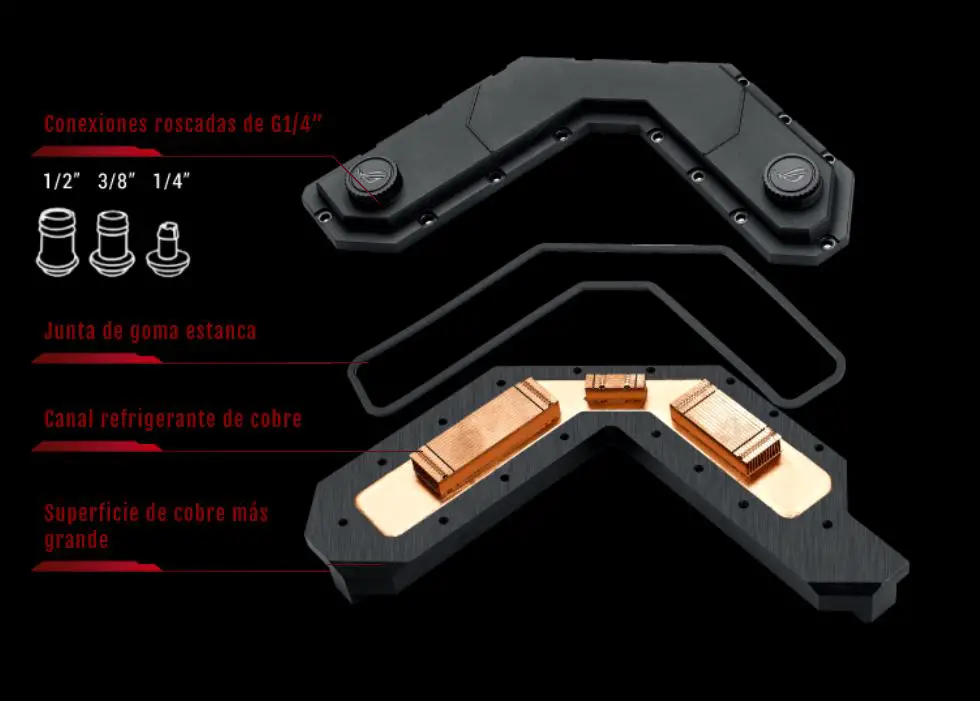
AMD X570 chipset.
The new chipset delivers major changes for the new AMD series, as well as for AM4 platforms within the high performance segment.
One of these new technologies is the adoption of the new PCIe 4.0 standard as the main innovation.
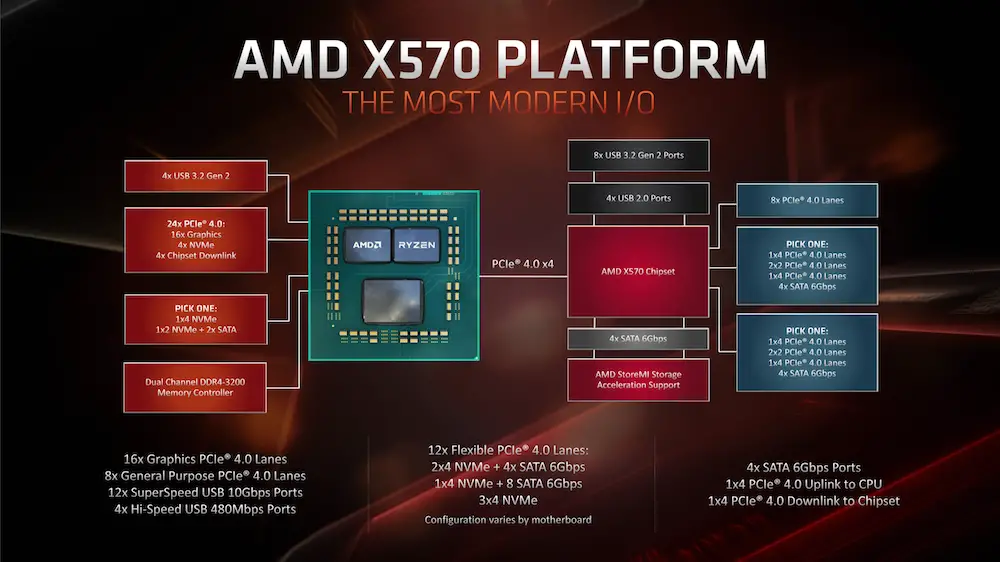
AMD shows to have one of the most modern I / O on the market this since it has a high data density in its PCIe channels, as well as high speed for its USB ports. All these innovations open to the motherboards based on this chipset the possibility of having great possibilities, in the chipset we would find PCIe 4.0 lines that will also control a series of USB 2.0 and 3.2 Gen 2 ports, some SATA 6Gbps and the StoreMI all connected to the CPU through a PCIe 4.0 x4.
The compatibility for the AM4 socket changes, the AMD X570 chipset would not be supporting Summit Ridge based processors or the first generation of Ryzen.
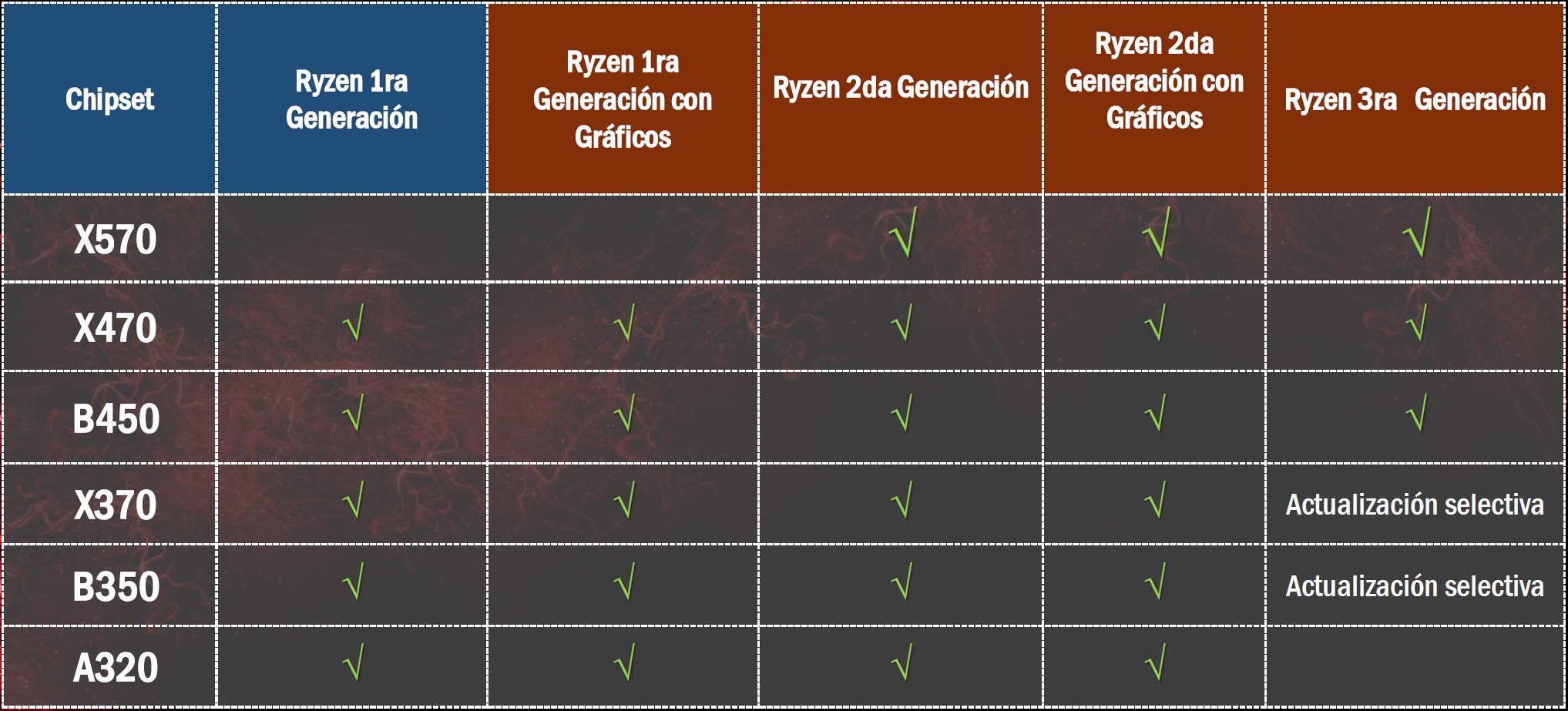
Specs.
| specs | |
|---|---|
| CPU | AMD AM4 Socket 3rd and 2nd AMD Ryzen ™ / 2nd and 1st Gen AMD Ryzen ™ with Radeon ™ Vega Graphics Processors |
| Chipset | AMD X570 |
| Memory | 4 x DIMM Memory, Max. 128GB, DDR4 MHz 3rd Gen AMD Ryzen ™ Processors |
| Multi-GPU compatible | 3rd and 2nd Gen AMD Ryzen ™ Processors Compatible with NVIDIA® 3-Way SLI ™ Technology Compatible with AMD 3-Way CrossFireX ™ Technology 2nd and 1st Gen AMD Ryzen ™ with Radeon ™ Vega Graphics Processors Supports AMD 2-Way CrossFireX ™ Technology |
| Expansion slots | 3rd Gen AMD Ryzen ™ Processors 2 x PCIe 4.0 x16 (x16 or dual x8) 2nd Gen AMD Ryzen ™ Processors 2 x PCIe 3.0 x16 (x16 or dual x8) 2nd and 1st Gen AMD Ryzen ™ with Radeon ™ Vega Graphics Processors 1 x PCIe 3.0 x16 (x8 mode) AMD X570 chipset 1 x PCIe 4.0 x16 (x4 mode) 1 x PCIe 4.0 x1 |
| Storage | 3rd Gen AMD Ryzen ™ Processors: 1 x M.2_1 socket 3with M Key, Type 2242/2260/2280 (PCIE 4.0 x4 and SATA modes) storage devices support 2nd Gen AMD Ryzen ™ / 2nd and 1st Gen AMD Ryzen ™ with Radeon ™ Vega Graphics Processors: 1 x M.2_1 socket 3 with M key, compatible with 2242/2260/2280 storage devices (SATA & PCIE 3.0 x 4 mode) AMD X570 chipset: 1 x M.2_2 socket 3with M Key, Type 2242/2260/2280/22110 (PCIE 4.0 x4 and SATA modes) storage devices support 8 x SATA 6Gb / s ports, Compatible with Raid 0, 1, 10 |
| Net | Intel® I211-AT Aquantia AQC111C 5G LAN ASUS LAN Guard ROG GameFirst V Technology |
| Wireless data network | Wi-Fi 802.11 a / b / g / n / ac |
| Bluetooth | Bluetooth® 5.0 |
| Audio | ROG SupremeFX 8 channel high definition audio CODEC – Compatible with: Multi-streaming, Jack-retasking on front panel Audio features: – Gold-plated jacks – Optical S / PDIF output on rear panel – Sonic Radar III – Sonic Studio III + Sonic Studio Link High quality 120 dB stereo playback SNR output and 113 dB SNR recording input – SupremeFX Shielding Technology – ESS® ES9023P – Compatible with up to 32 Bits / 192 kHz * * Due to limitations in HDA bandwidth, 32-Bit / 192kHz is not supported for 8-Channel audio. |
| USB ports | 3rd and 2nd Gen AMD Ryzen ™ / 2nd and 1st Gen AMD Ryzen ™ with Radeon ™ Vega Graphics Processors: 4 x USB 3.2 Gen 2 port (s) (4 on back panel, red, Type A) 3rd and 2nd Gen AMD Ryzen ™ / 2nd and 1st Gen AMD Ryzen ™ with Radeon ™ Vega Graphics Processors: 4 x USB 3.2 Gen 1 port (s) (4 on back panel, red, Type A) AMD X570 chipset: 1 x USB 3.2 Gen 2 front panel connector port (s) AMD X570 chipset: 4 x USB 3.2 Gen 2 port (s) (3 on back panel, red, Type A, 1 x Type-C) AMD X570 chipset: 8 x USB 3.2 Gen 1 port (s) (4 on back panel, blue, 4 on board) AMD X570 chipset: 4 x USB 2.0 port (s) |
| I / O rear panel | 1 x Optical S / PDIF output 1 x Clear CMOS button 1 x USB Flashback® BIOS button 1 x ASUS Wi-Fi Module 1 x Gold-plated audio jacks 4 x USB 3.2 Gen 1 (up to 5Gbps) ports 8 x USB 3.2 Gen 2 (up to 10Gbps) ports () Anti-surge LAN (RJ45) port 1 x AQC-111C 5G LAN port |
| Internal I / O | 1 x PCH_FAN 1 x M.2 socket 3 with M key, type 2242/2260 storage devices support (both SATA & PCIE mode) 8 x SATA 6Gb / s connector (s) 1 x CPU fan connector (s) 3 x Chassis fan connector (s) 1 x Optional fan connector (s) 1 x CPU OPT Fan Connector 1 x 24-pin EATX power connector 1 x 8-pin ATX 12V power connector 2 x Aura RGB Strip Header (s) 1 x 4-pin ATX 12V power connector 2 x Addressable Gen 2 header (s) 1 x Front Panel Audio Connector (AAFP) 1 x M.2 Socket 3 with M Key, type 2242/2260/2280/22110 storage devices support (SATA mode & PCIE mode) 1 x LN2 Mode Head 1 x Power Button 1 x reset button 1 x Slow Mode Switch (s) 1 x AIO_PUMP connector 1 x H_AMP fan connector 1 x W_PUMP + connector 1 x Safe Boot button 1 x ReTry button 1 x Node Connector (s) 1 x System Panel Connector 1 x Speaker connector 1 x W_IN header 1 x W_OUT header 1 x W_FLOW header 1 x Thermal sensor connector |
| accessories | User manual 1 x ROG logo plate sticker 4 x SATA power cable 1 x support DVD 1 x M.2 screws 1 x Wi-Fi antenna (s) 1 x ROG big sticker 1 x Q-Connector 1 x Extension cable for RGB strips (80 cm) 1 x ROG Coasters 1 x Extension cable for Addressable LED 2 x ROG weave SATA 6G cable 1 x ROG Thank you card |
| BIOS | 256 Mb Flash ROM, UEFI AMI BIOS, PnP, WfM2.0, SM BIOS 3.2, ACPI 6.2 |
| Factory format | ATX factory format 12 inches x 9.6 inches (30.5 cm x 24.4 cm) |
| Price | Amazon: $ 699.99 |
First look.
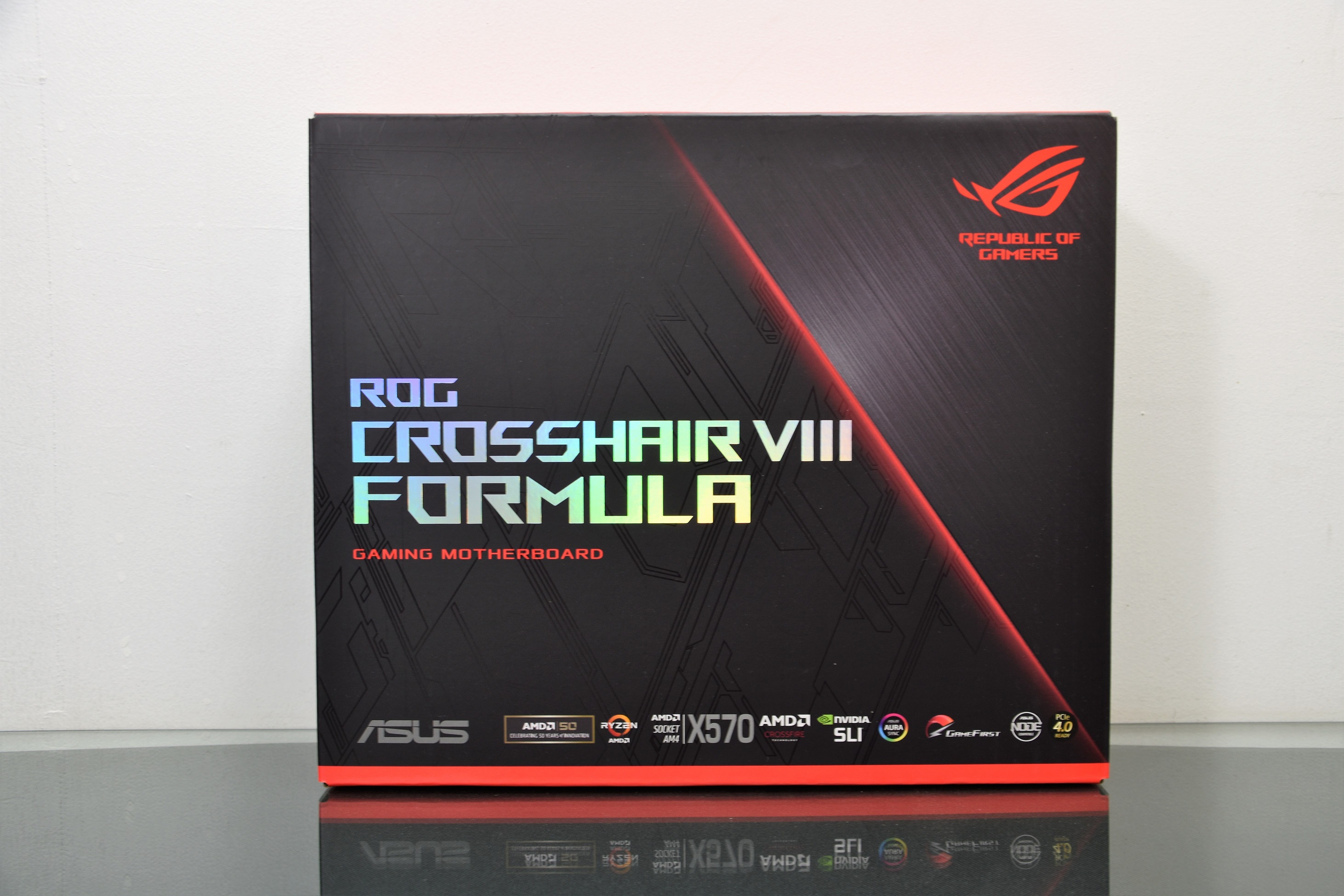
On the front side the packaging of what is the top-of-the-line ASUS model for AMD matches the aesthetics of its ROG series, also showing the 50th anniversary of AMD and the support of PCIe 4.0.
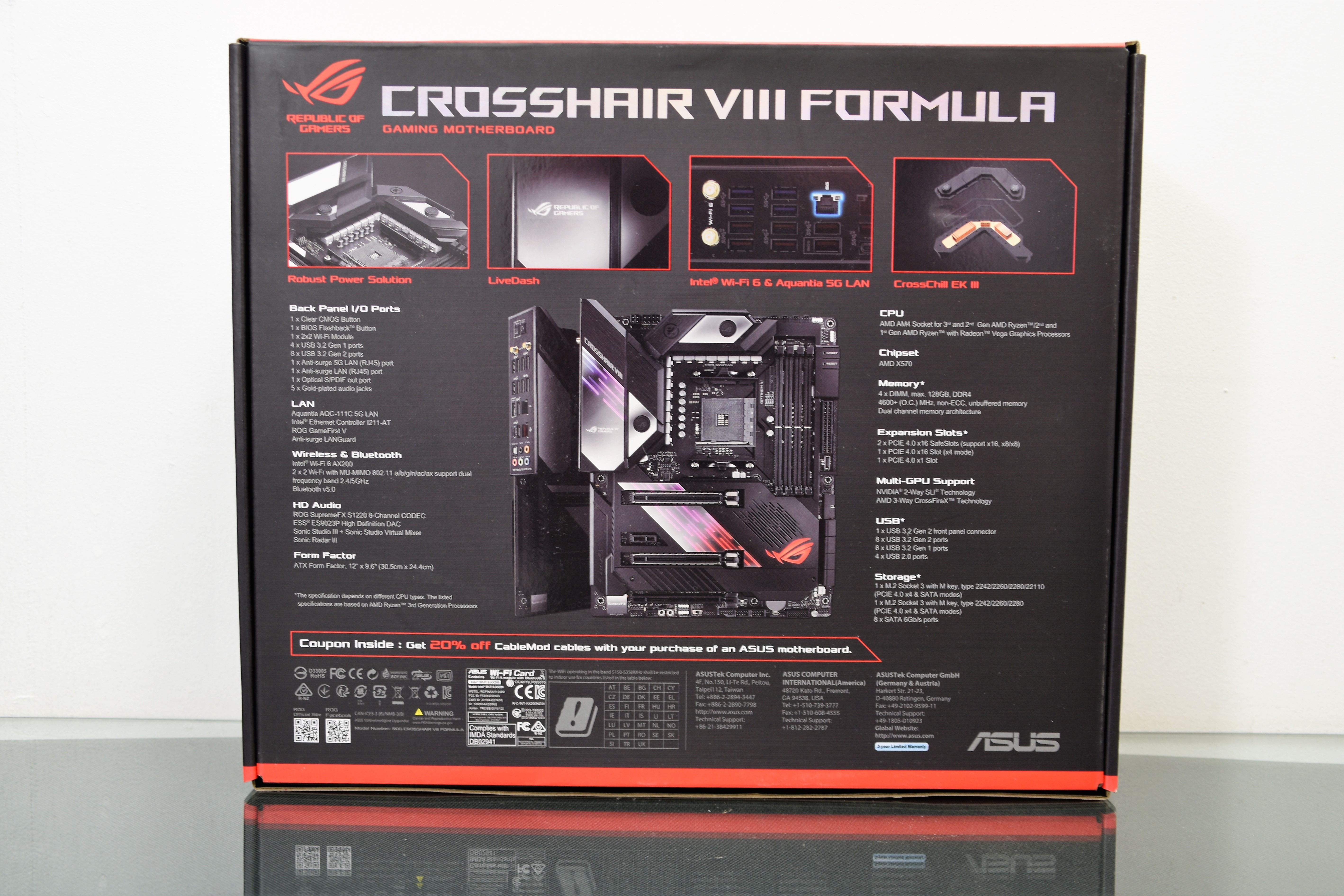
On its back, we see the main features of this model, such as the built-in Wi-Fi and the Aquantia 5G LAN, CrossChill EK III and Live Dash.
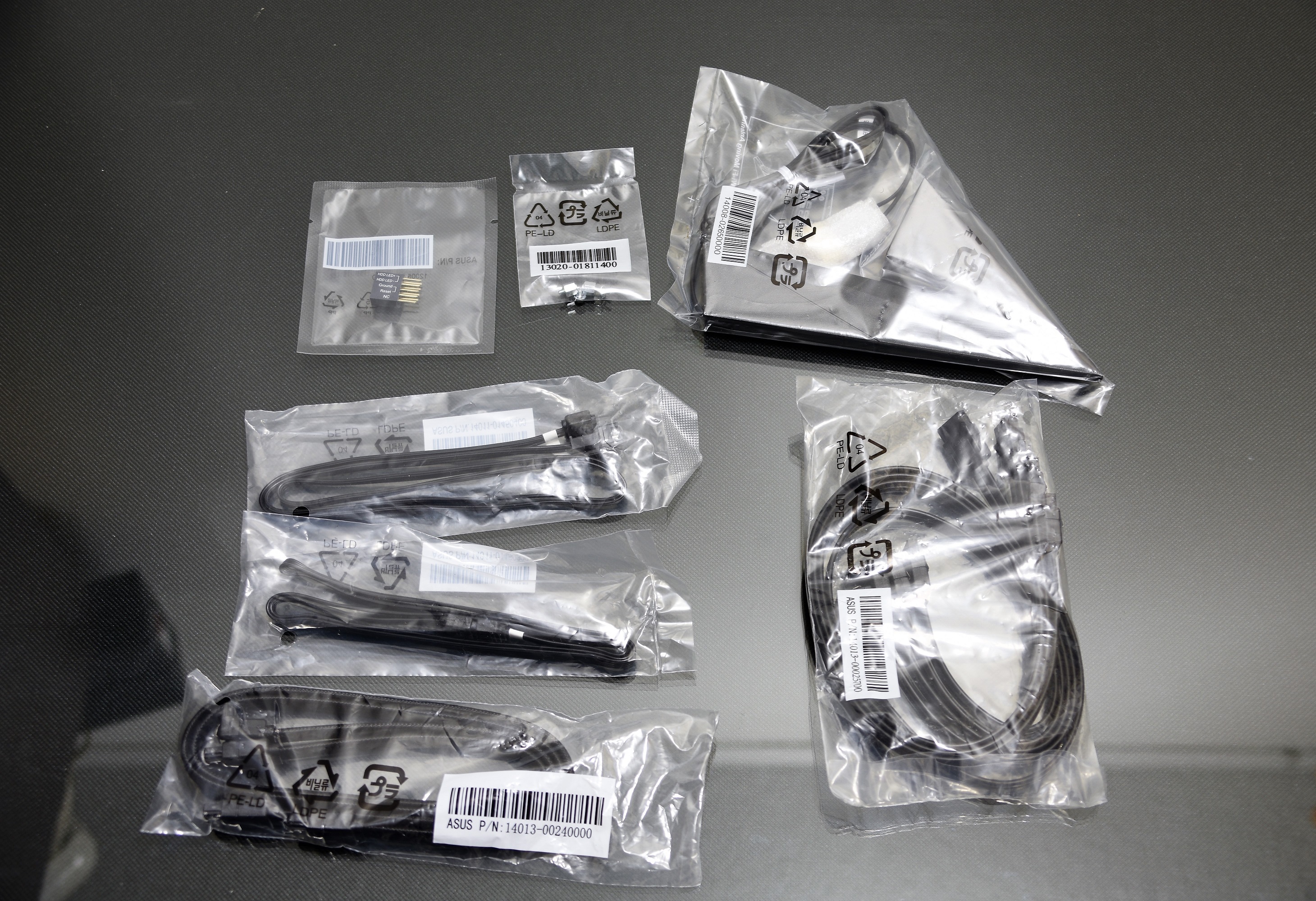
The contents of the package include, 3 pairs of SATA cables, Wi-Fi antenna, A-RGB extenders, 1 x Extension Cable for RGB strips (80 cm), 1 x M.2 Screw, 1 x Q-Connector
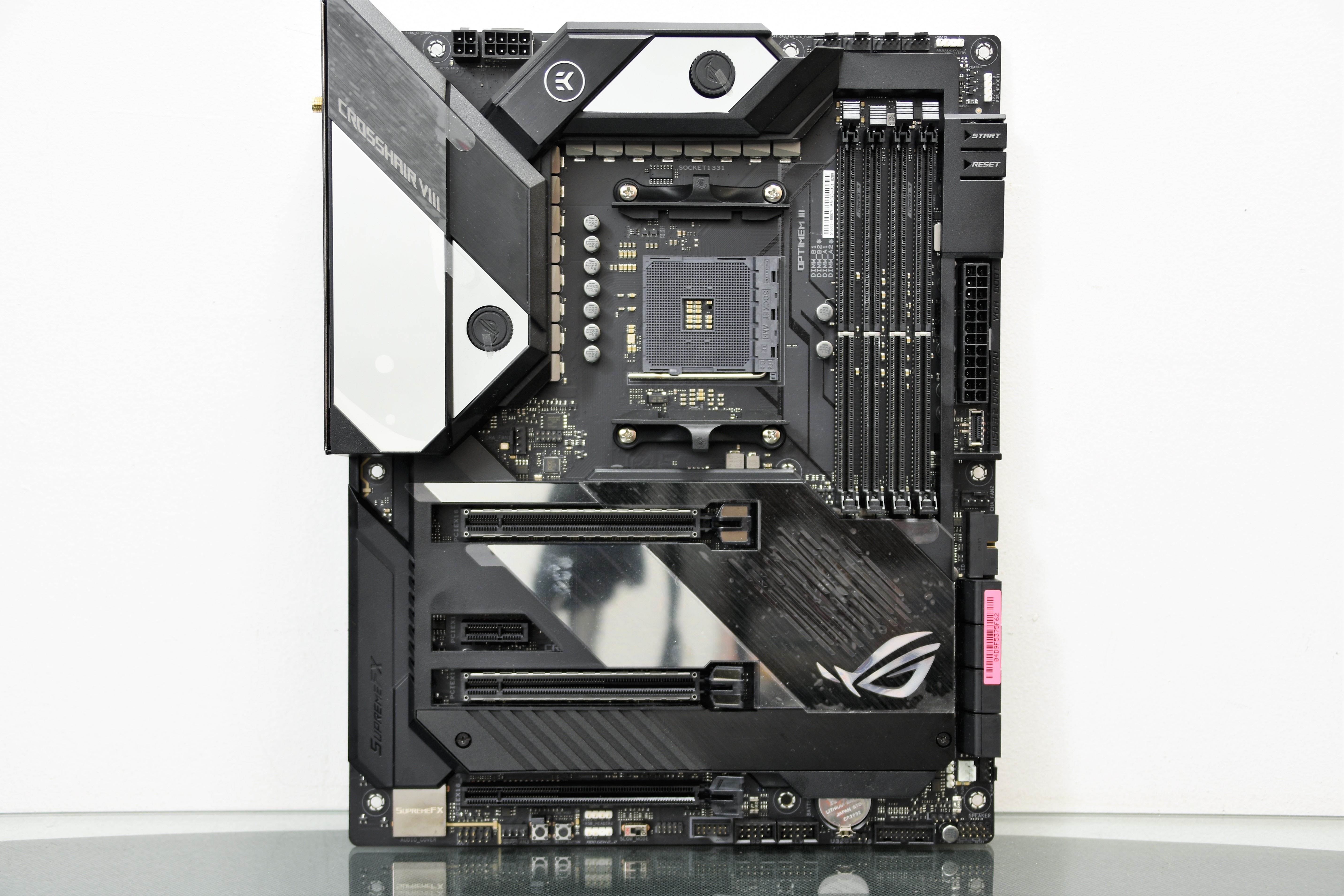
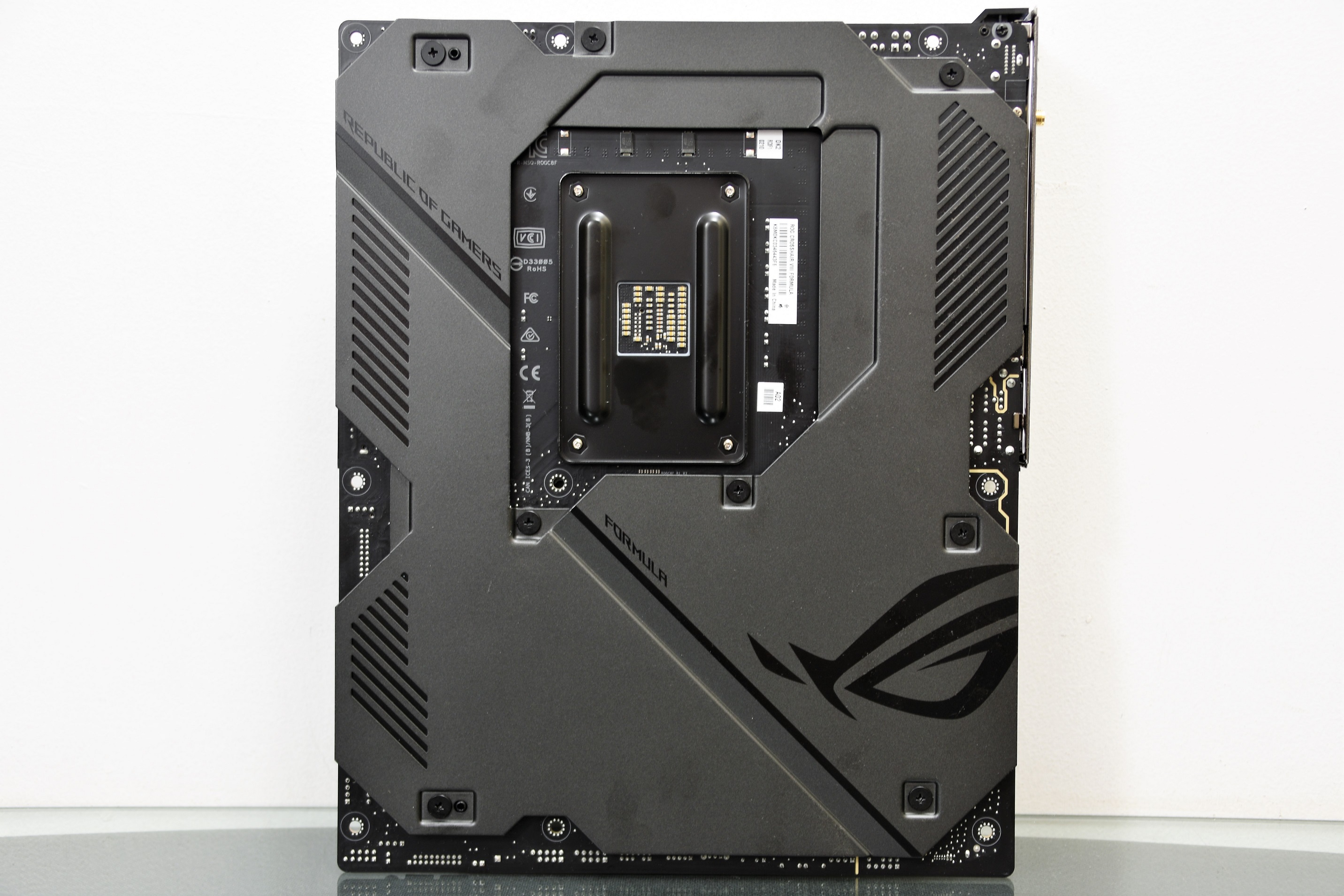
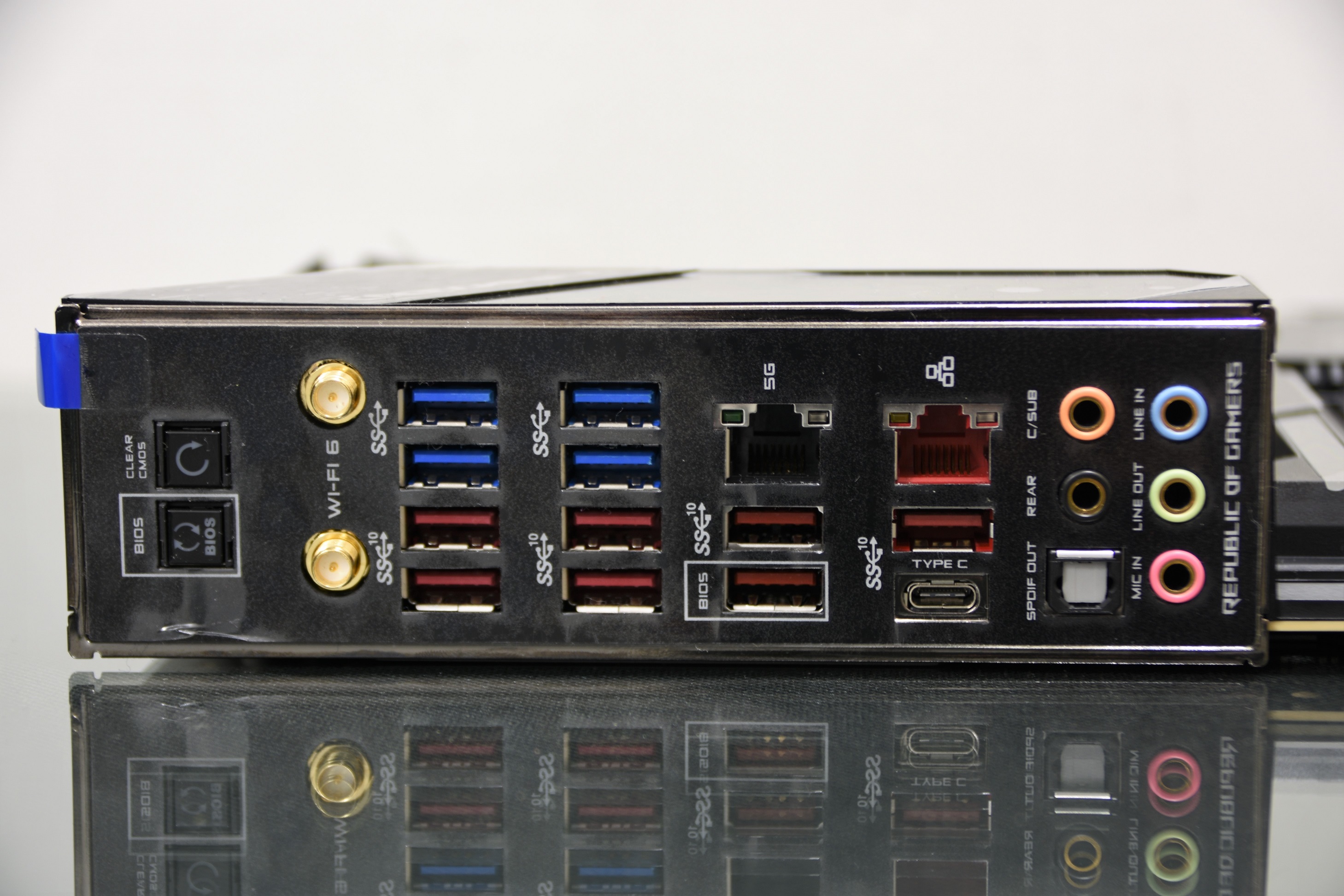
As we have seen in other AM4 socket Crosshair, ASUS tends to include many USB ports, in this model we can see 8 x USB 3.2 Gen 2 (1x Type C), 4 x USB 3.2 Gen, next to this 1 x AQC-111C 5G LAN port and Anti-surge LAN (RJ45) port, 1 x Gold-plated audio jacks, 1 x ASUS Wi-Fi, 1 x USB BIOS Flashback, 1 x Clear CMOS and finally 1 x Optical S / PDIF out.
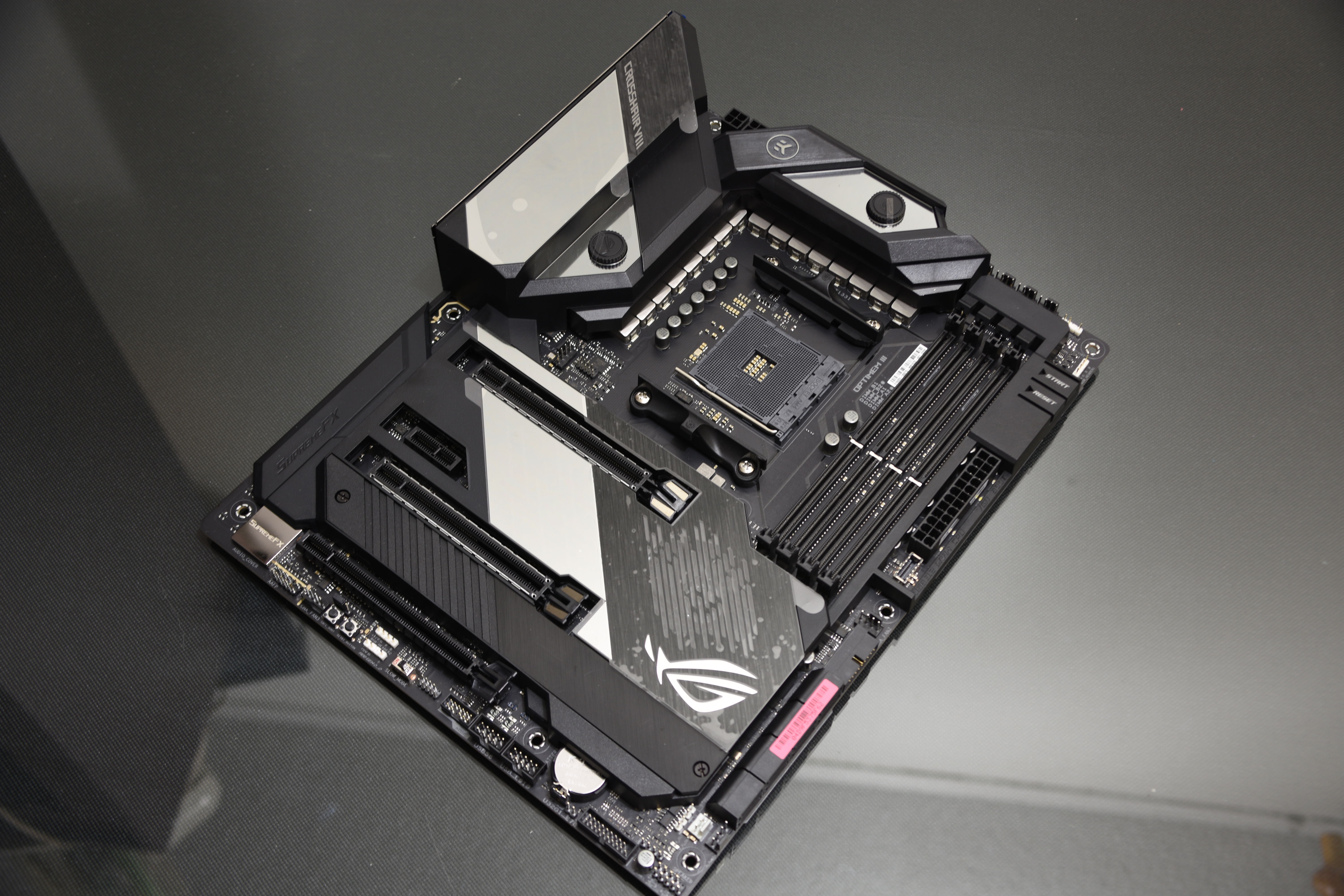
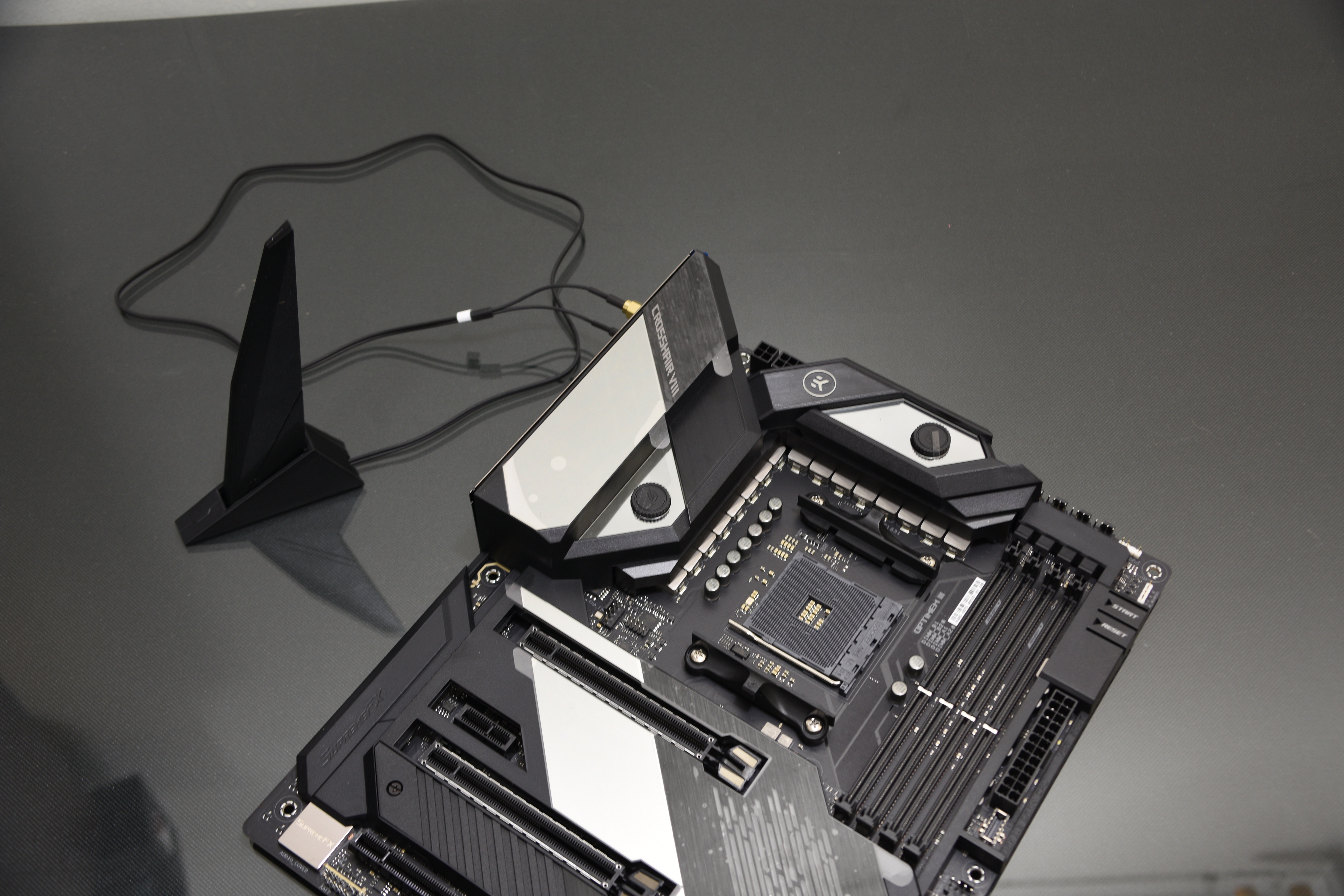
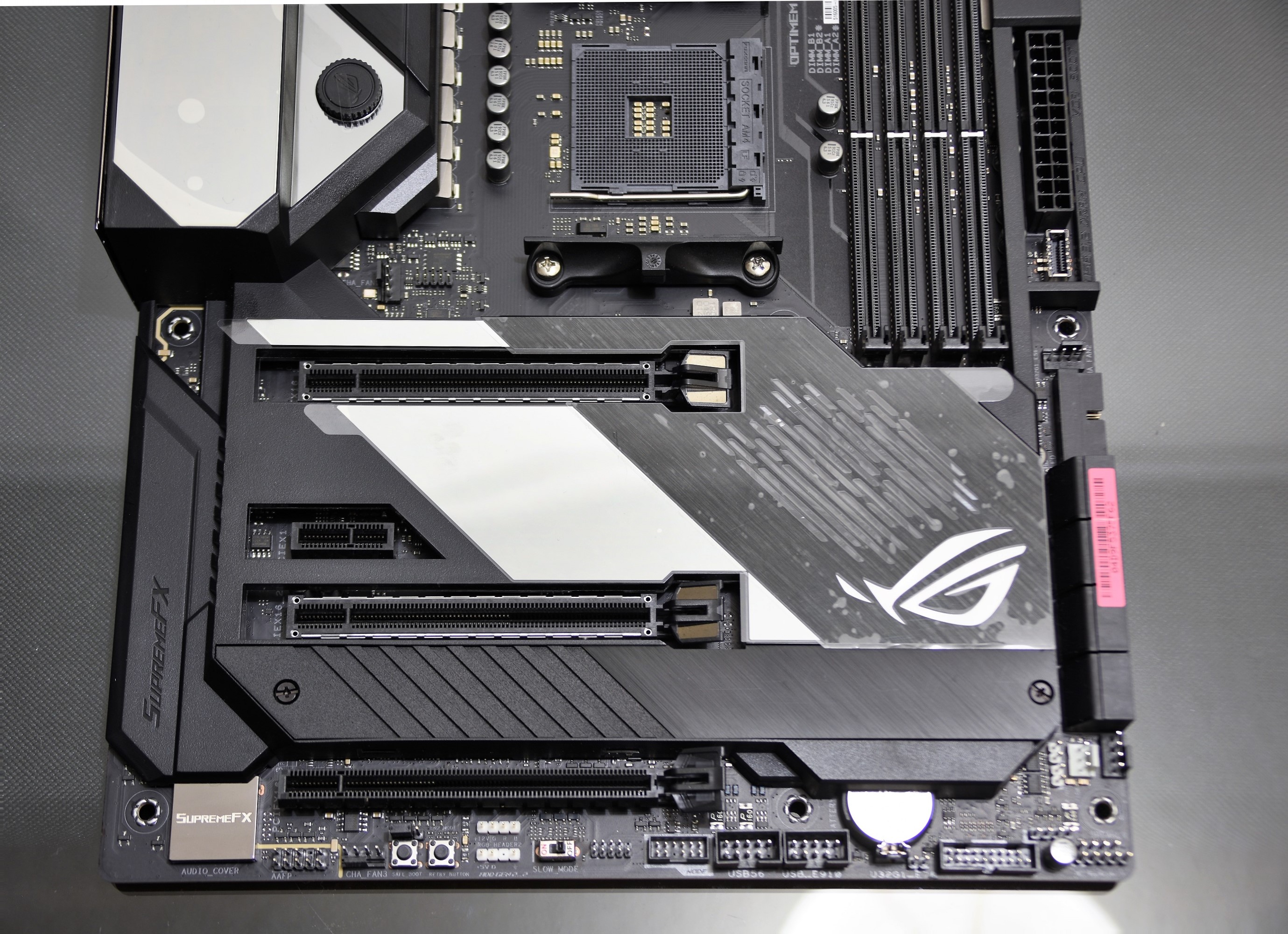
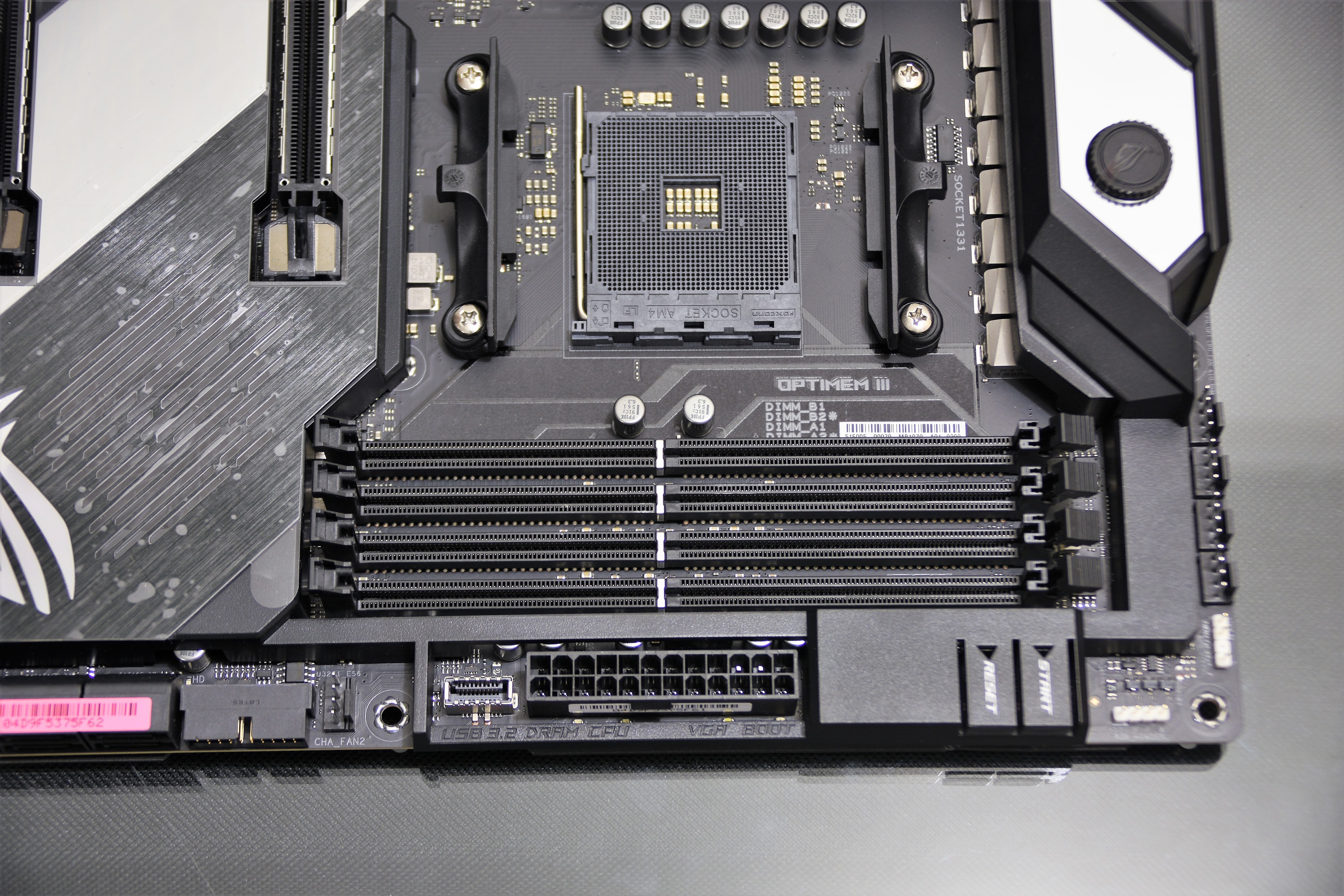
The 4x memory modules are capable of supporting up to 128GB of memory in this version of the CROSSHAIR, not to mention that in the 3rd generation the memory controller will allow you to easily exceed 4000 MHz in frequency.
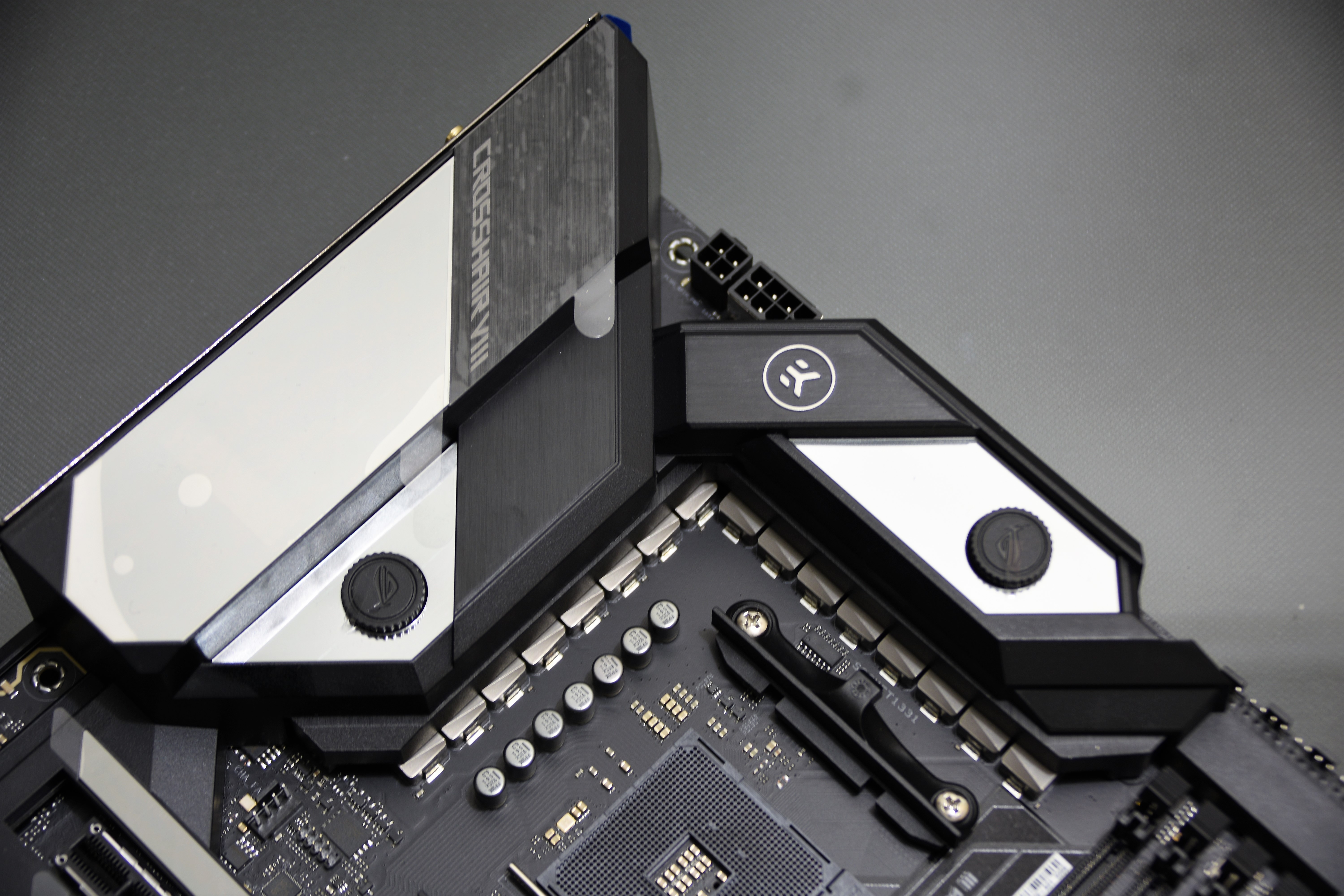
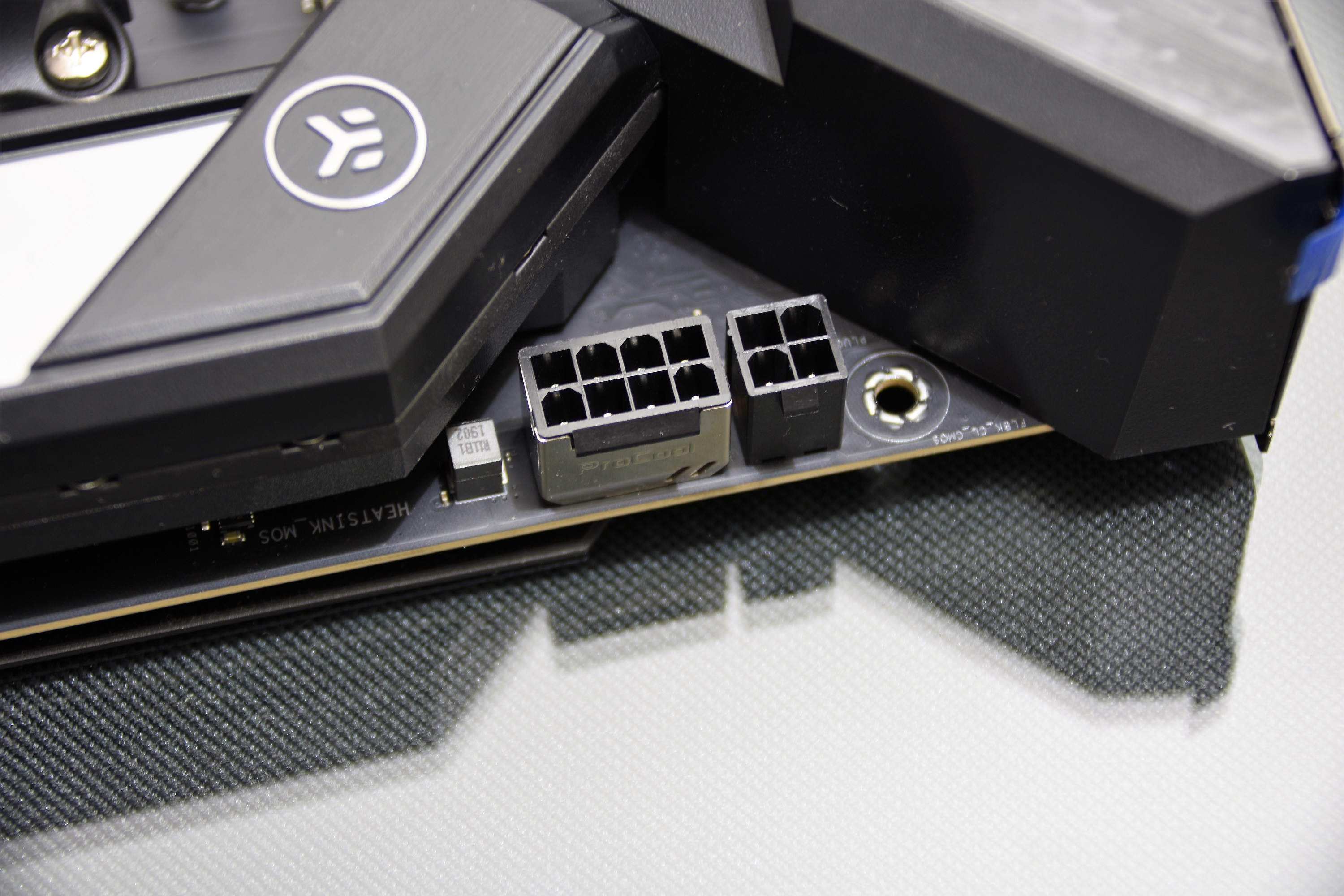
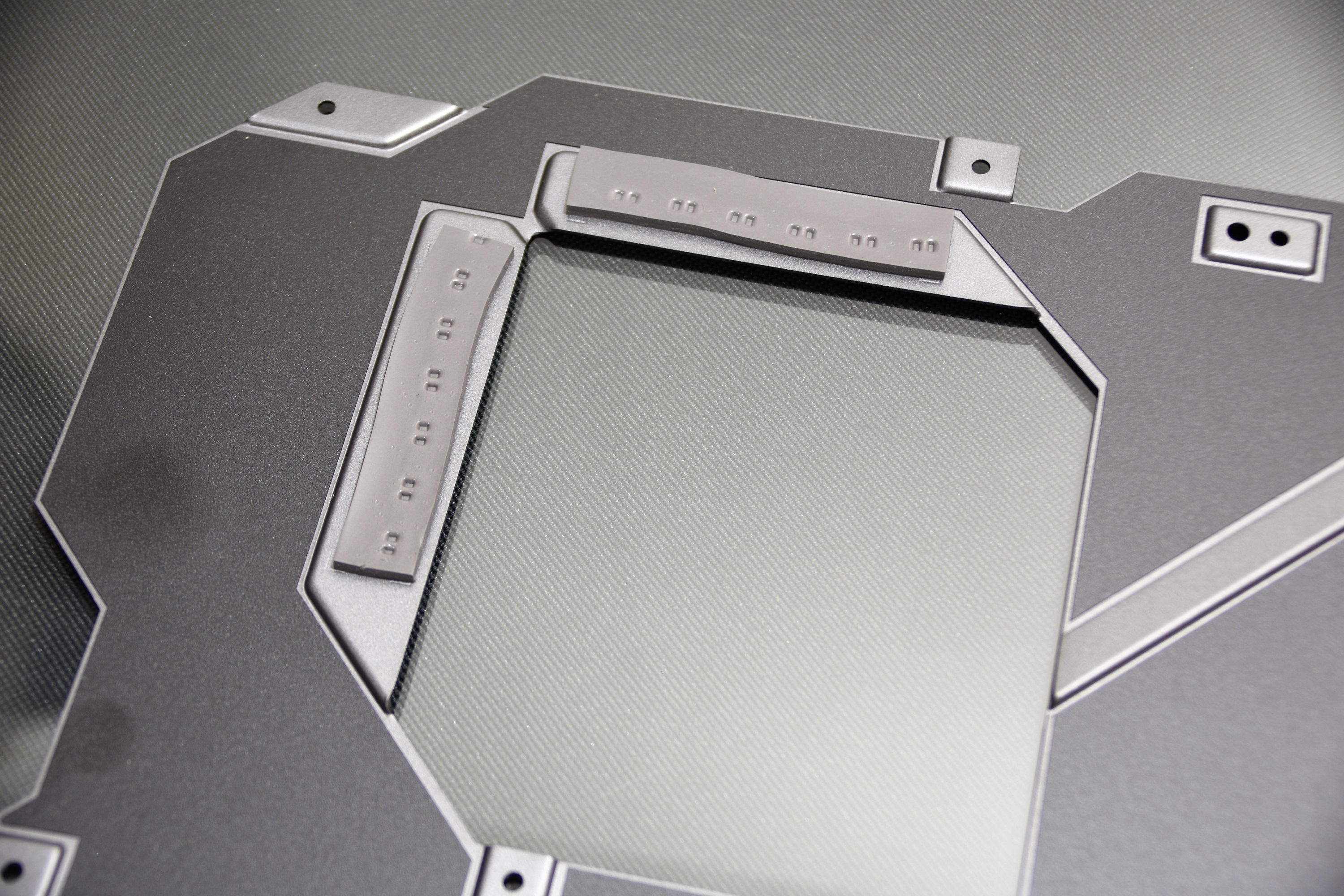
The backplate of the motherboard not only protection siver, but also through two thermal pad provides passive cooling in the VRM area.
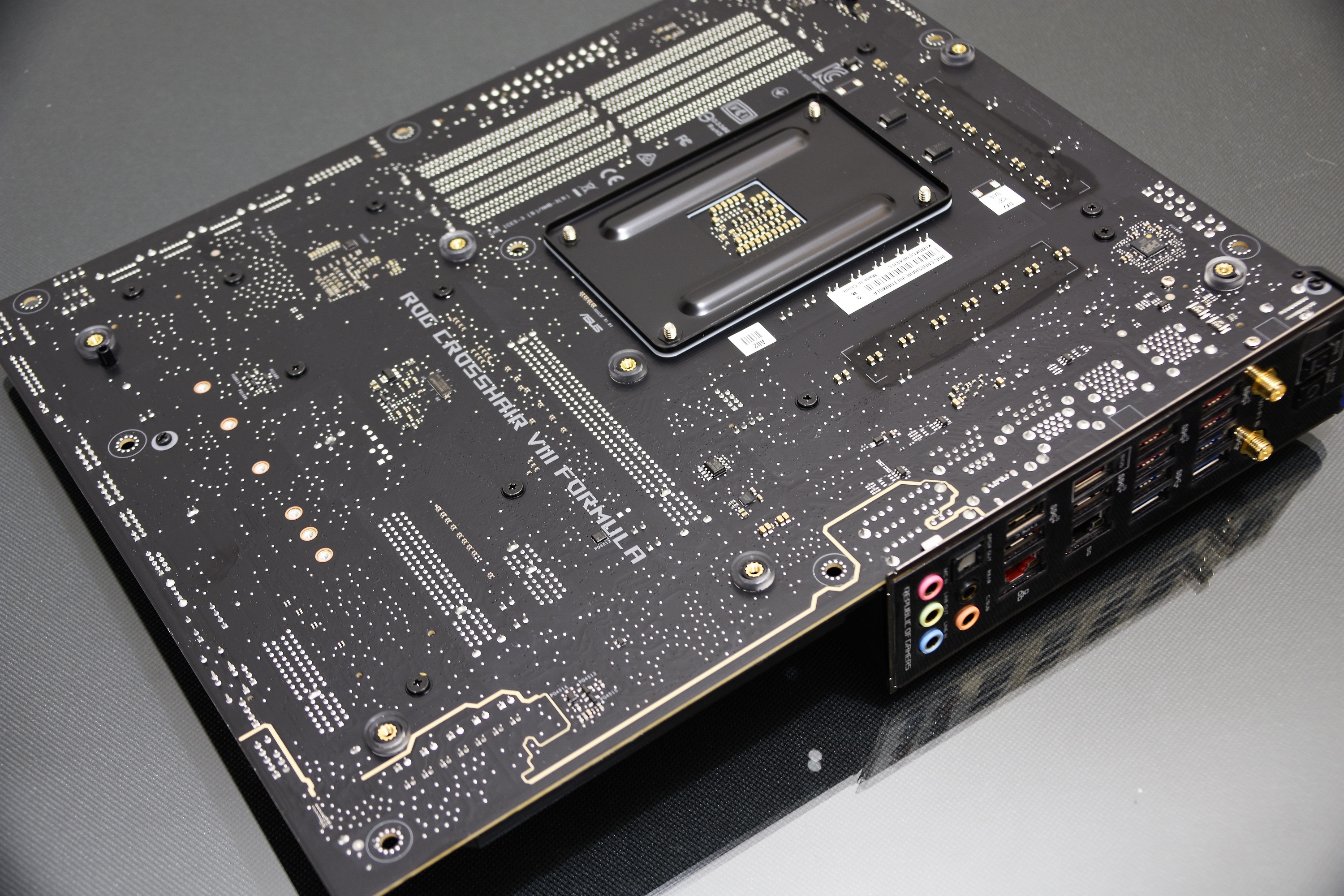
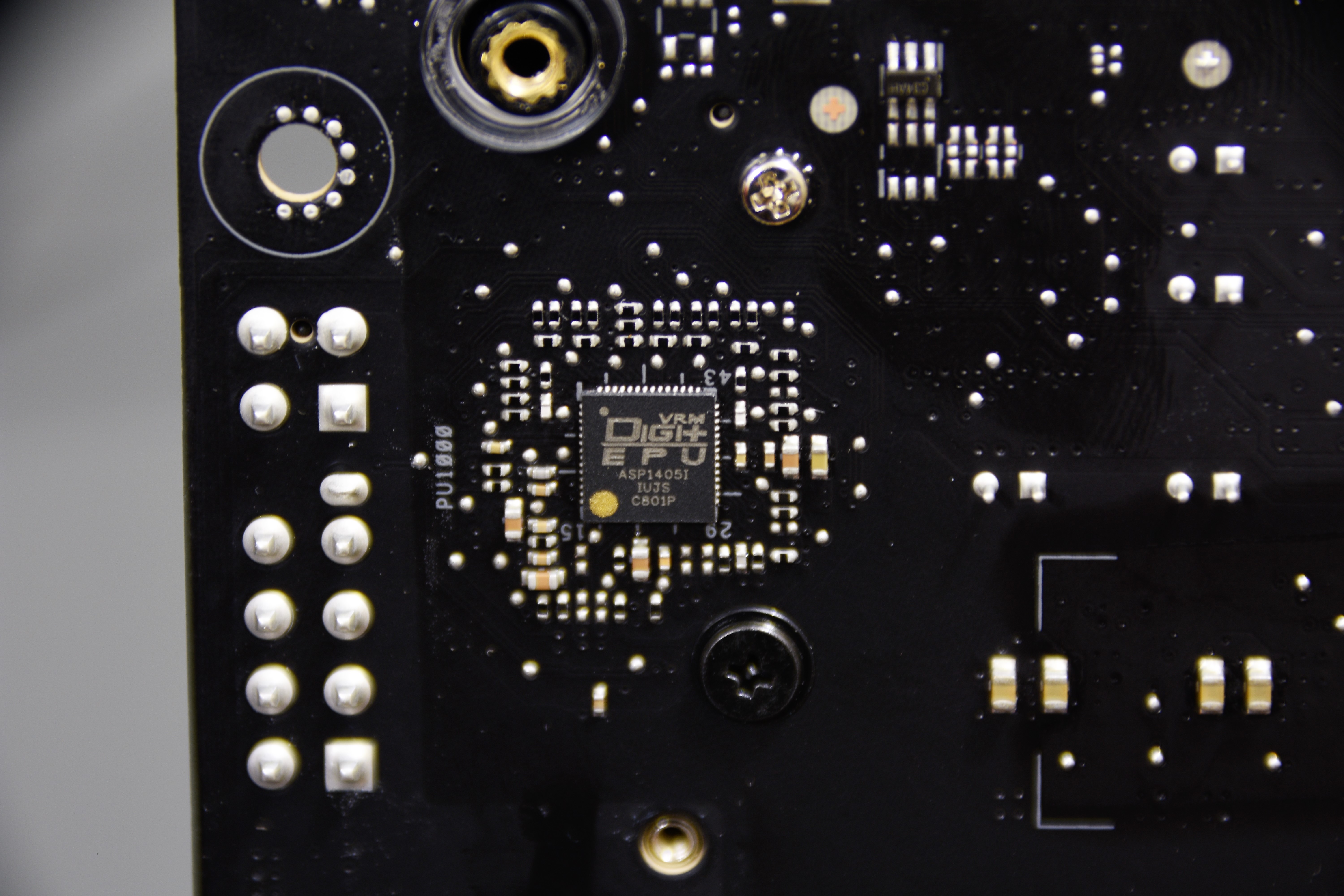
On the back of the motherboard we can find the DIGI + VRM model ASP14051 or Infineon-IR35201.
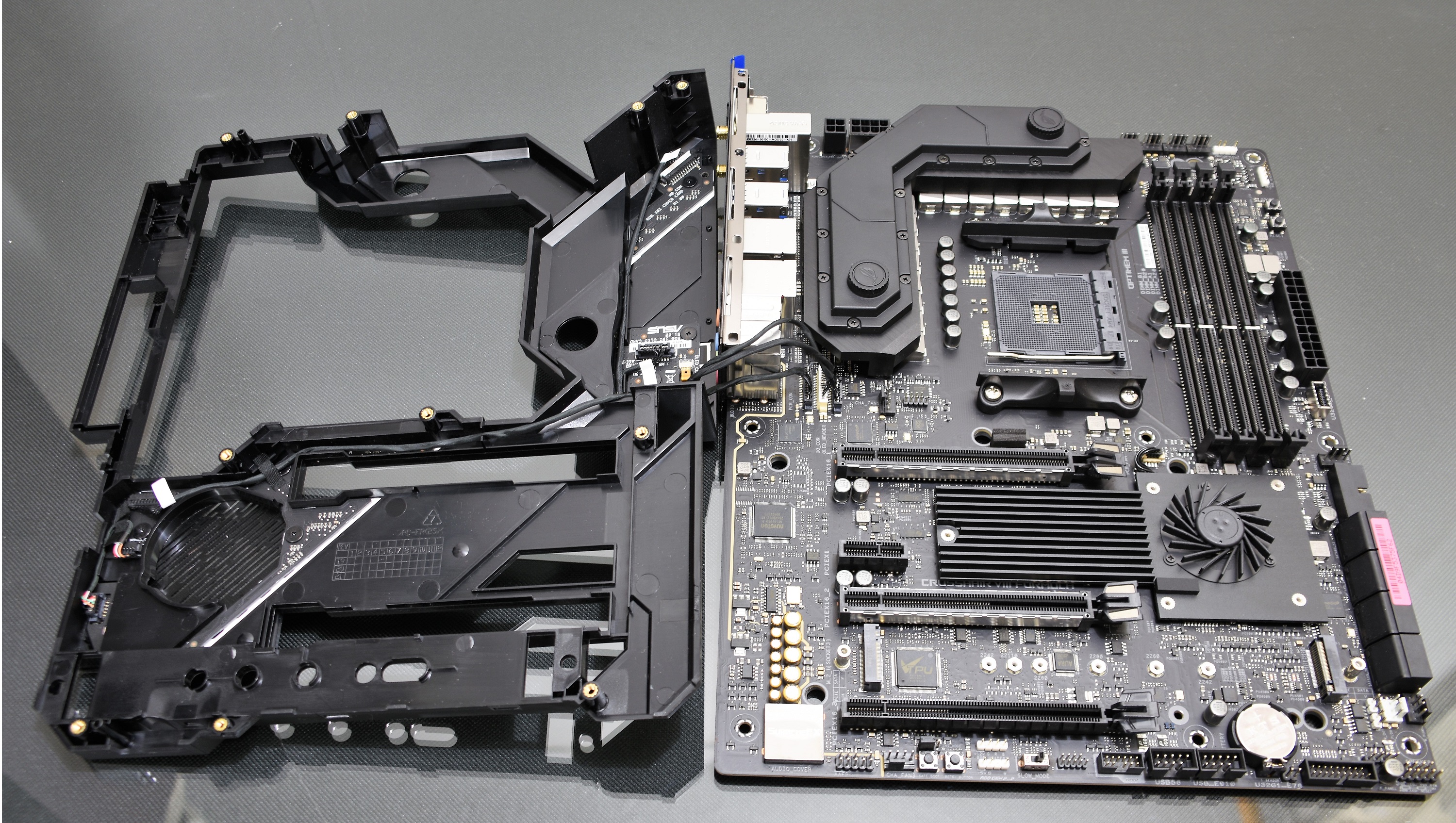
Removing the previous frame we can see the internal wiring plot for the RGB zones of the motherboard, as well as the internal circuit for the air.
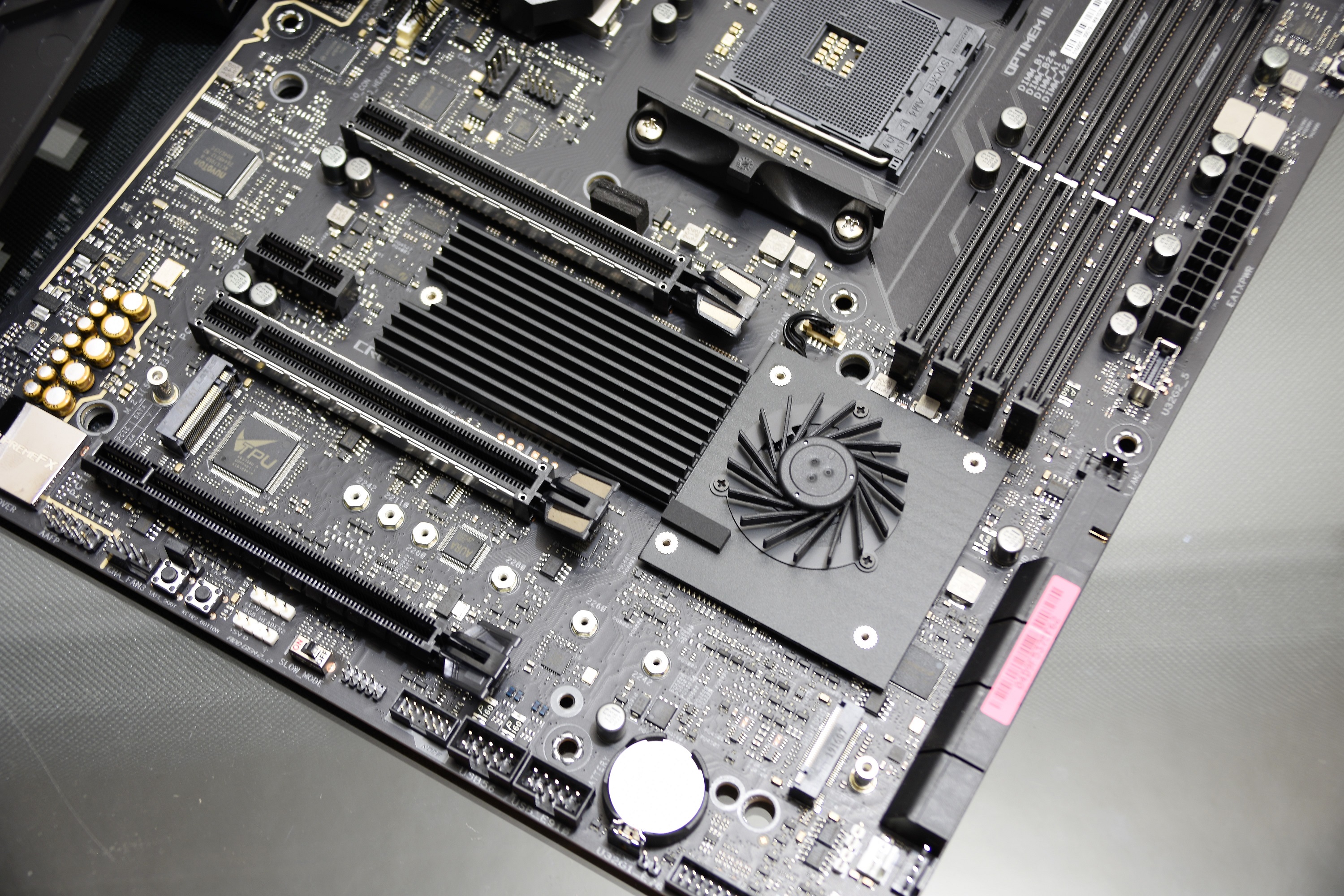
With the high load density that the AMD X570 chipset possesses, the need for a dedicated fan in this area was vital.
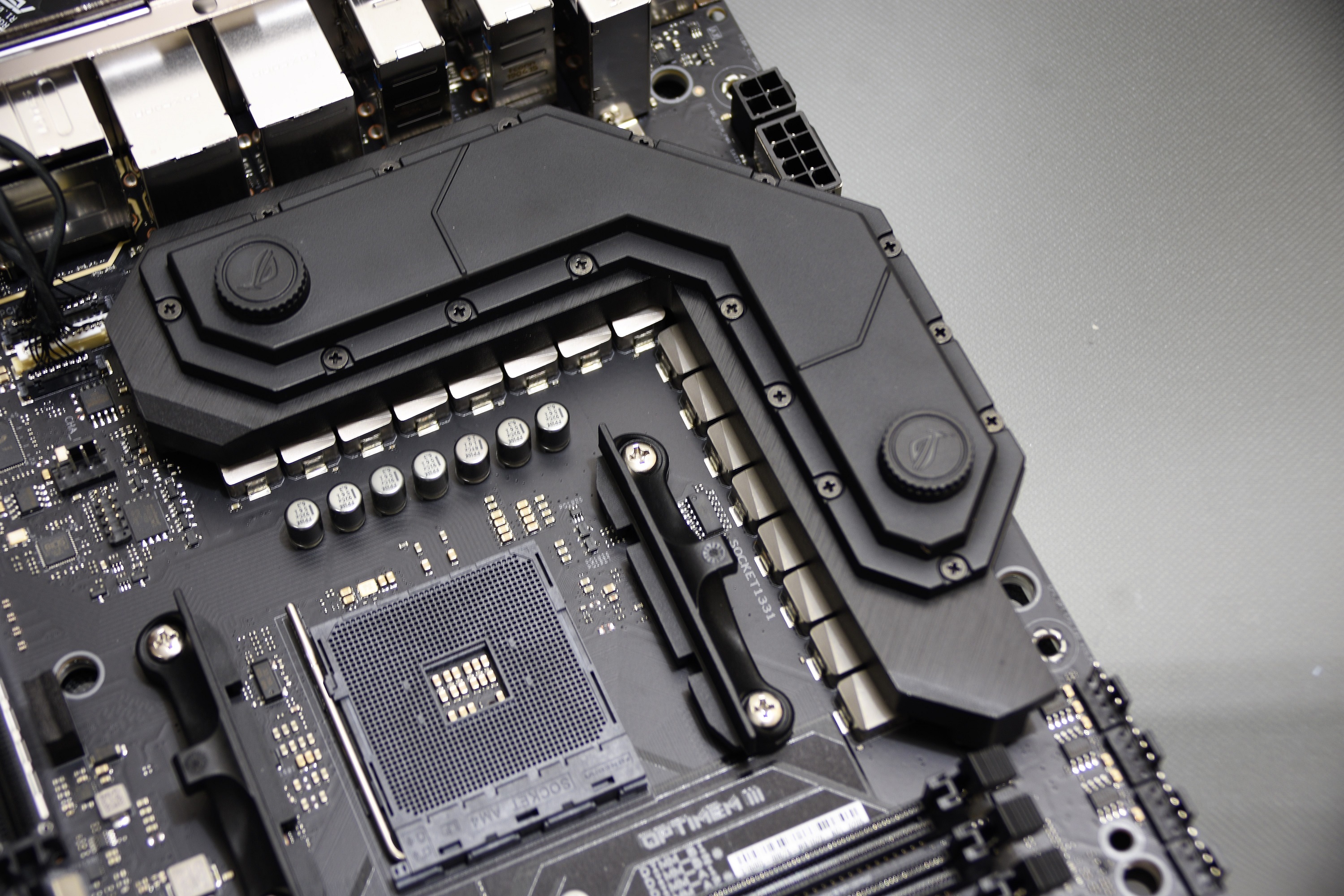
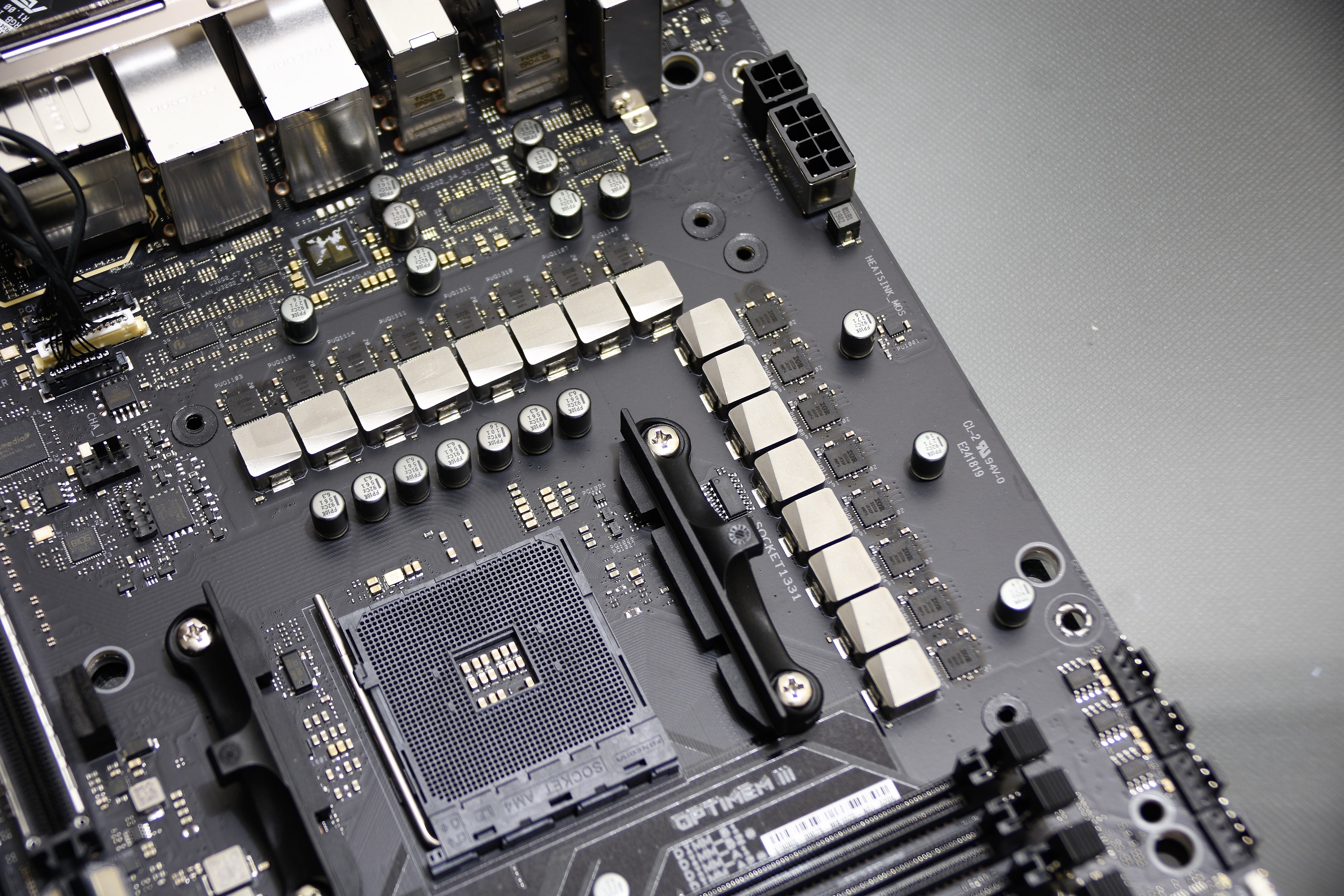
Testing and Methodology Platform.
| Test Platform | |
|---|---|
| Processor | – AMD Ryzen 9 3900X |
| Motherboard | – ASUS ROG CROSSHAIR VIII FORMULA |
| Memories | – G. Skill TridentZ 3200MHz 2x8GB |
| Refrigeration | – AMD Wraith Prism |
| Graphics card | – NVIDIA GTX 1070 Ti |
| Power supply | – Corsair RM1000X |
| Storage | – SAMSUNG 960PRO 512GB SSD M.2 |
| Monitor | – ASUS MG28UQ |
- Windows 10 Pro x64 operating system [Update 1903].
- The tests were performed in an environment with a temperature of approximately 25 ° C.
- The platform was used without a cabinet.
- The drivers used for NVIDIA graphics cards were: ForceWare 430.86 WHQL
- The resolutions of the synthetic tests are the default ones for each of the benchmarks.
- The real test resolutions are 1920 × 1080 and 3820 × 2160 with all the maximum available graphics in each game.
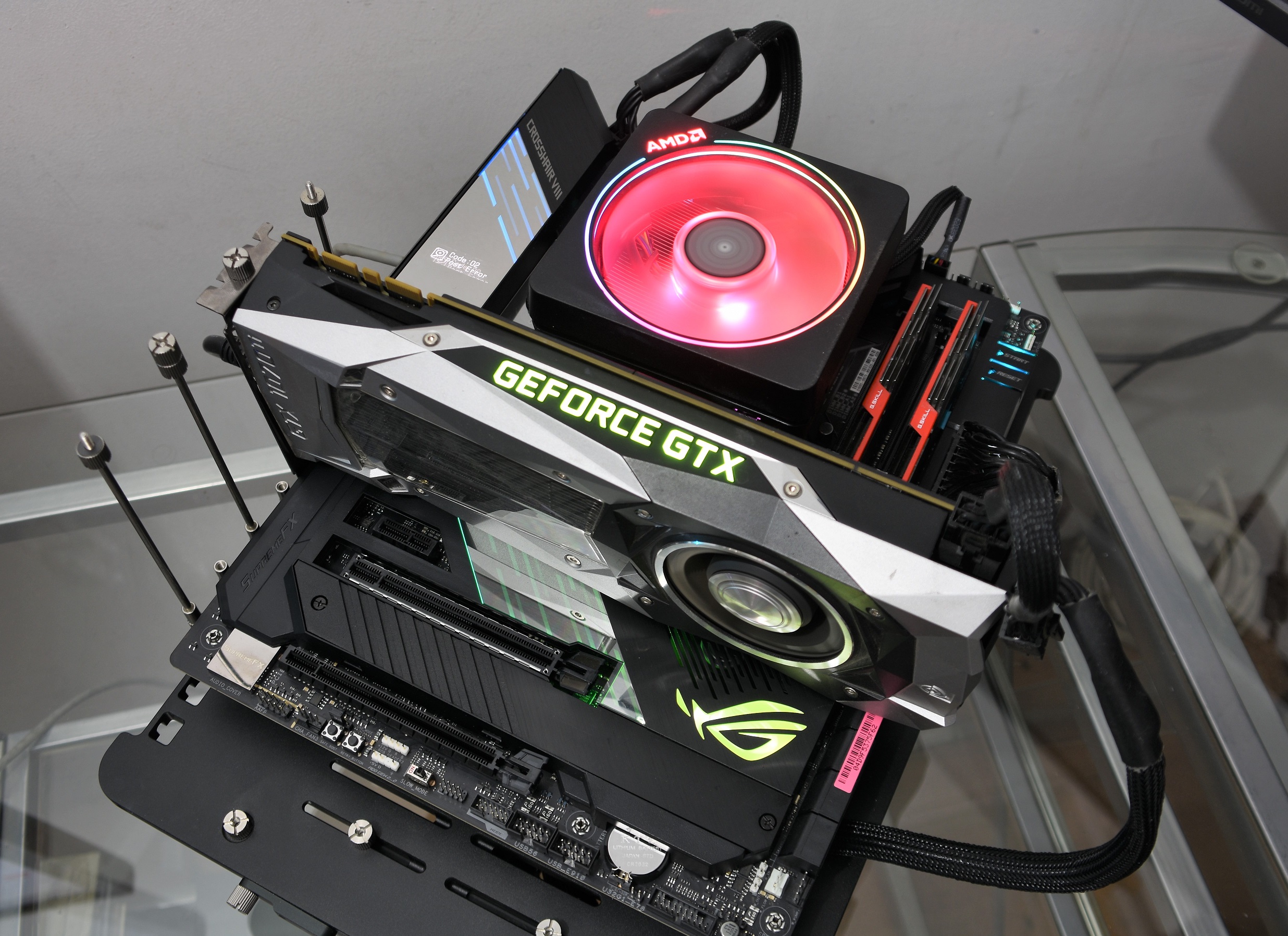
2D tests
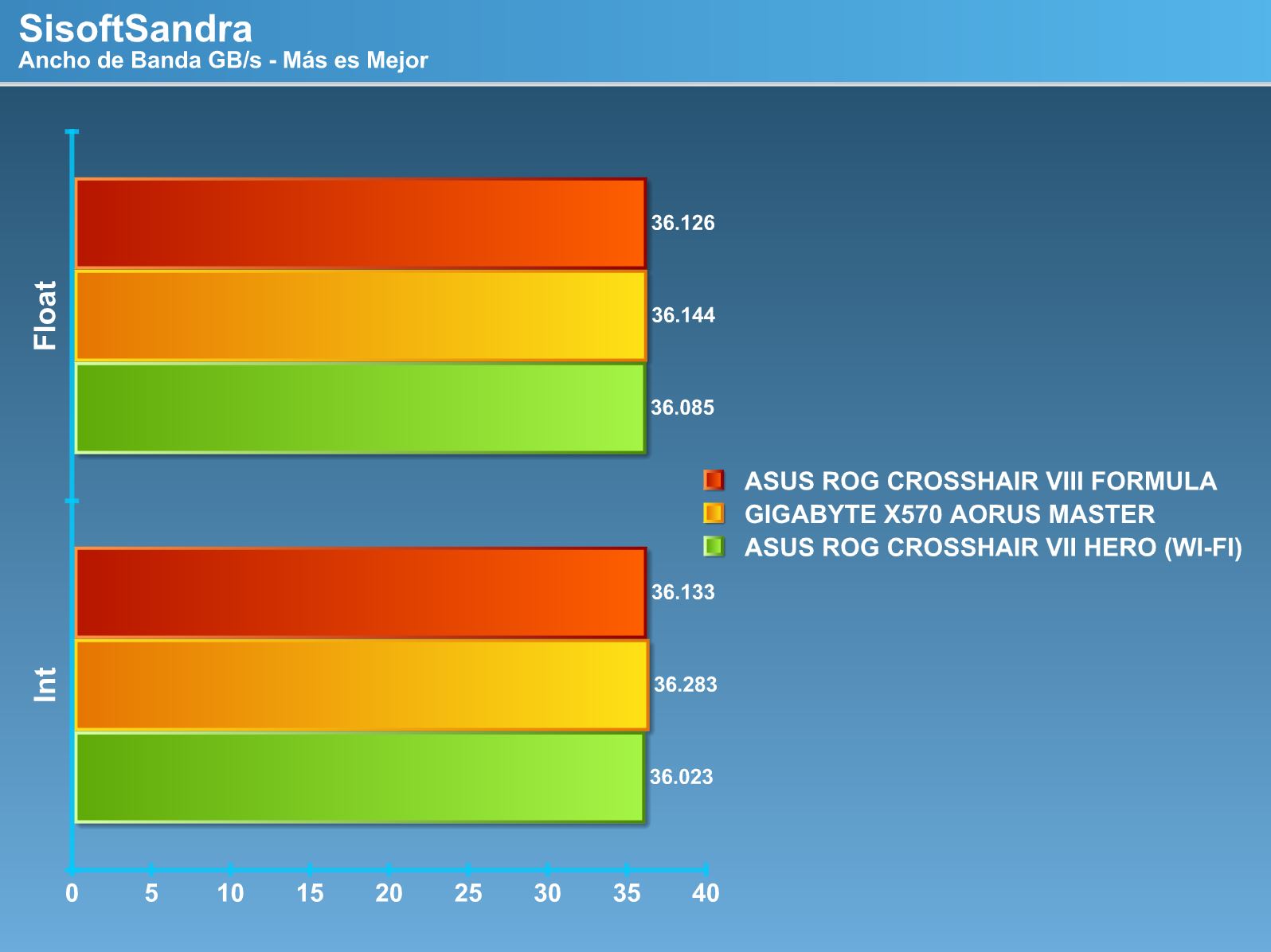
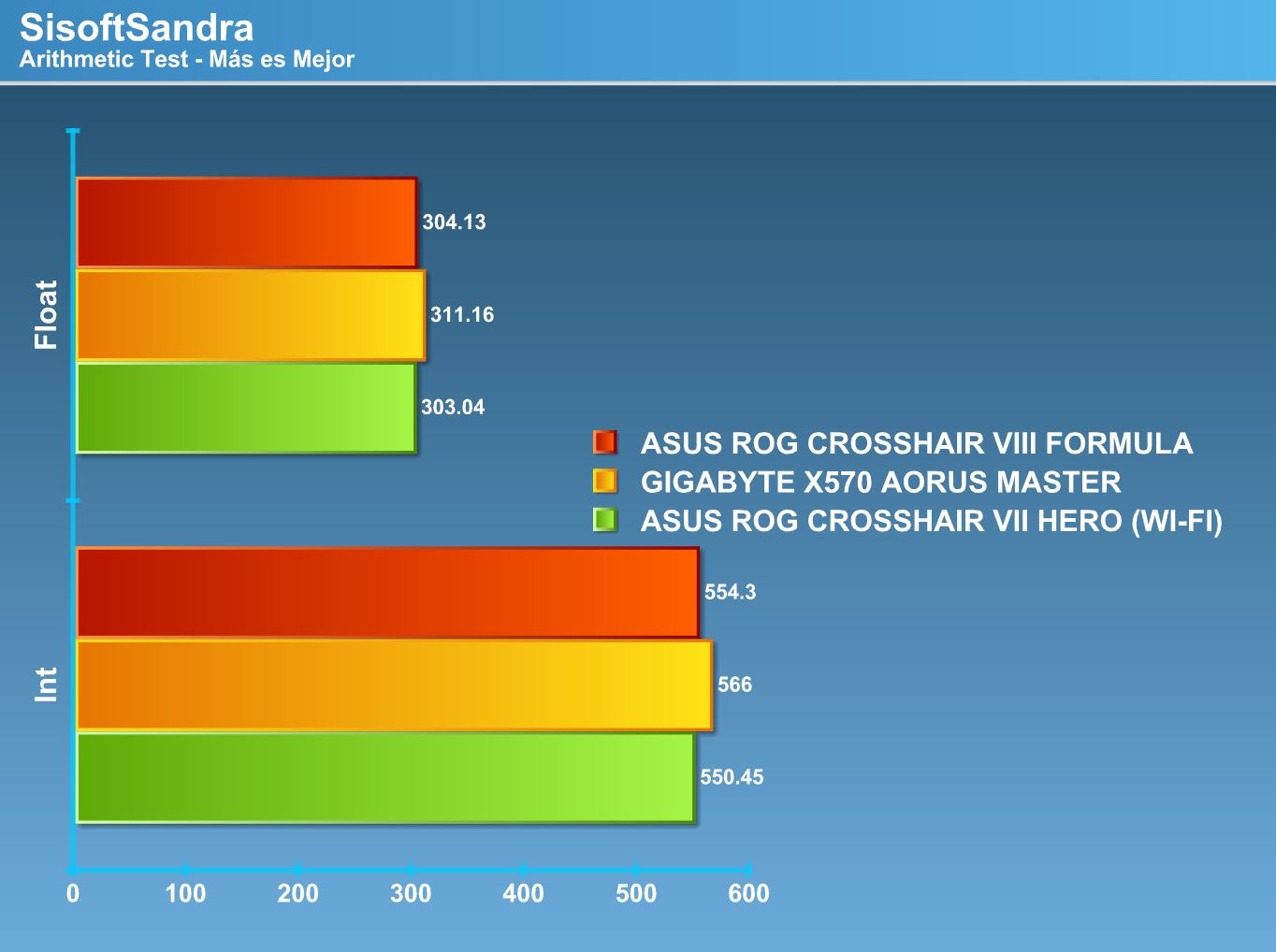
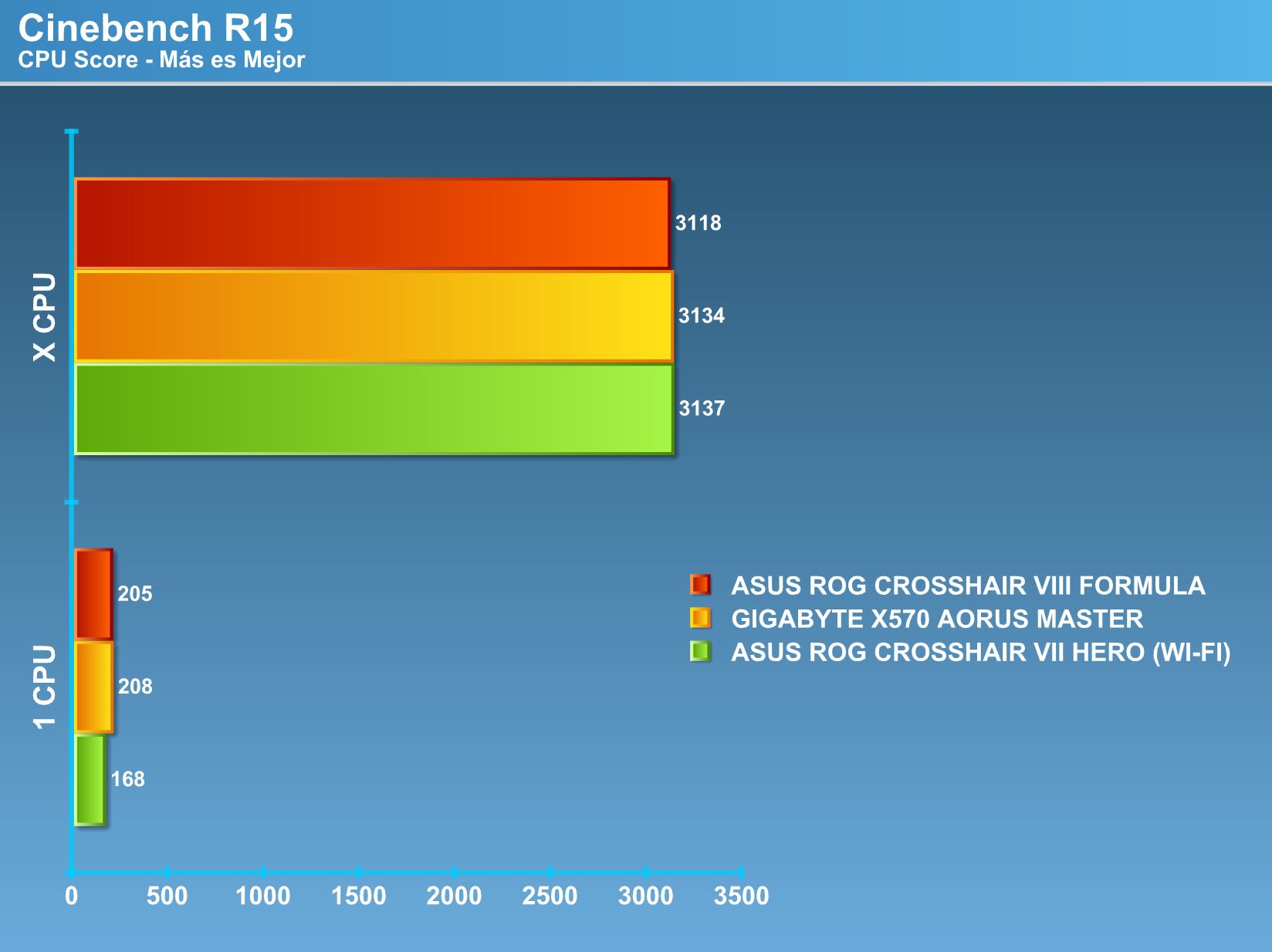
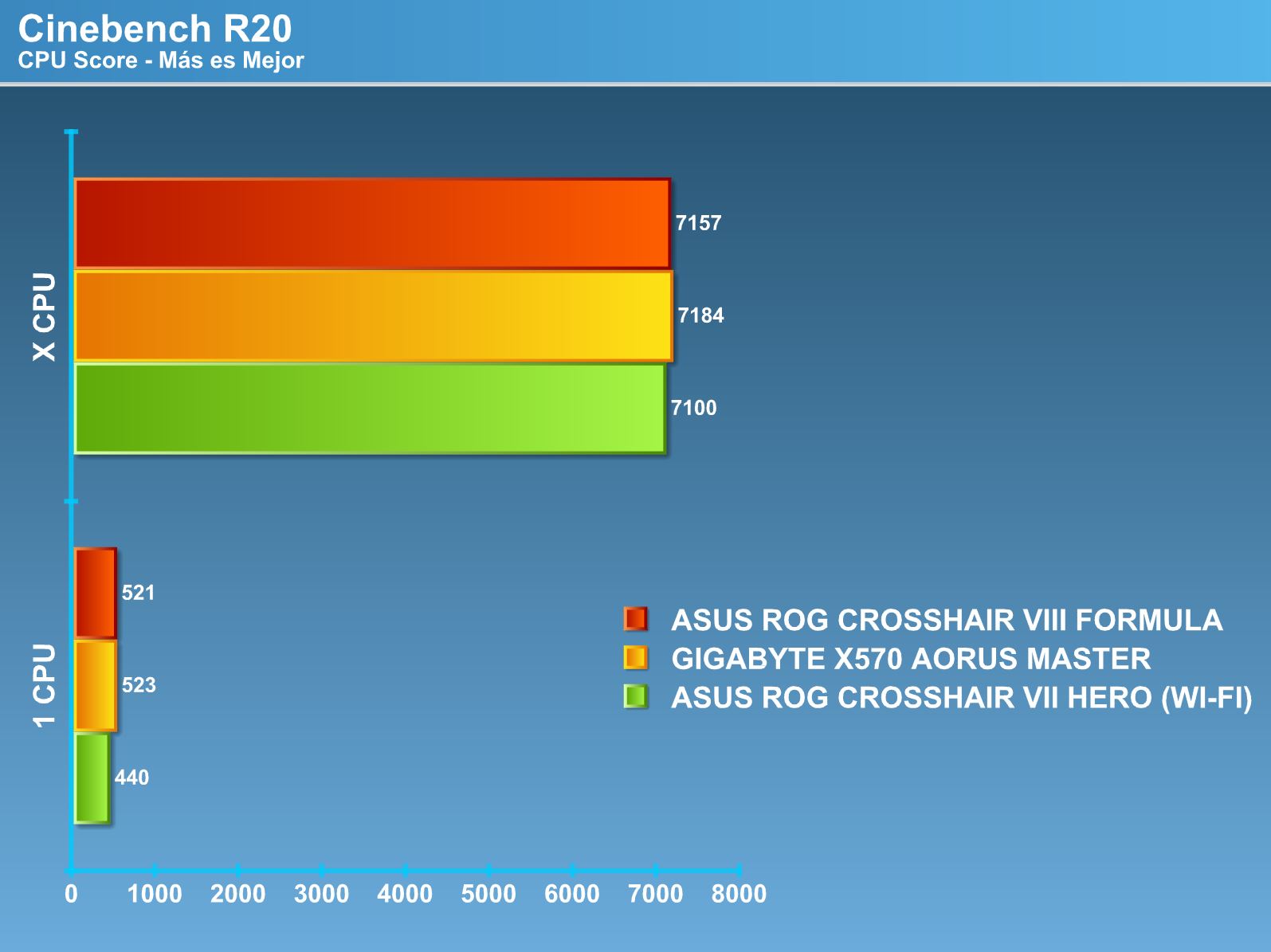
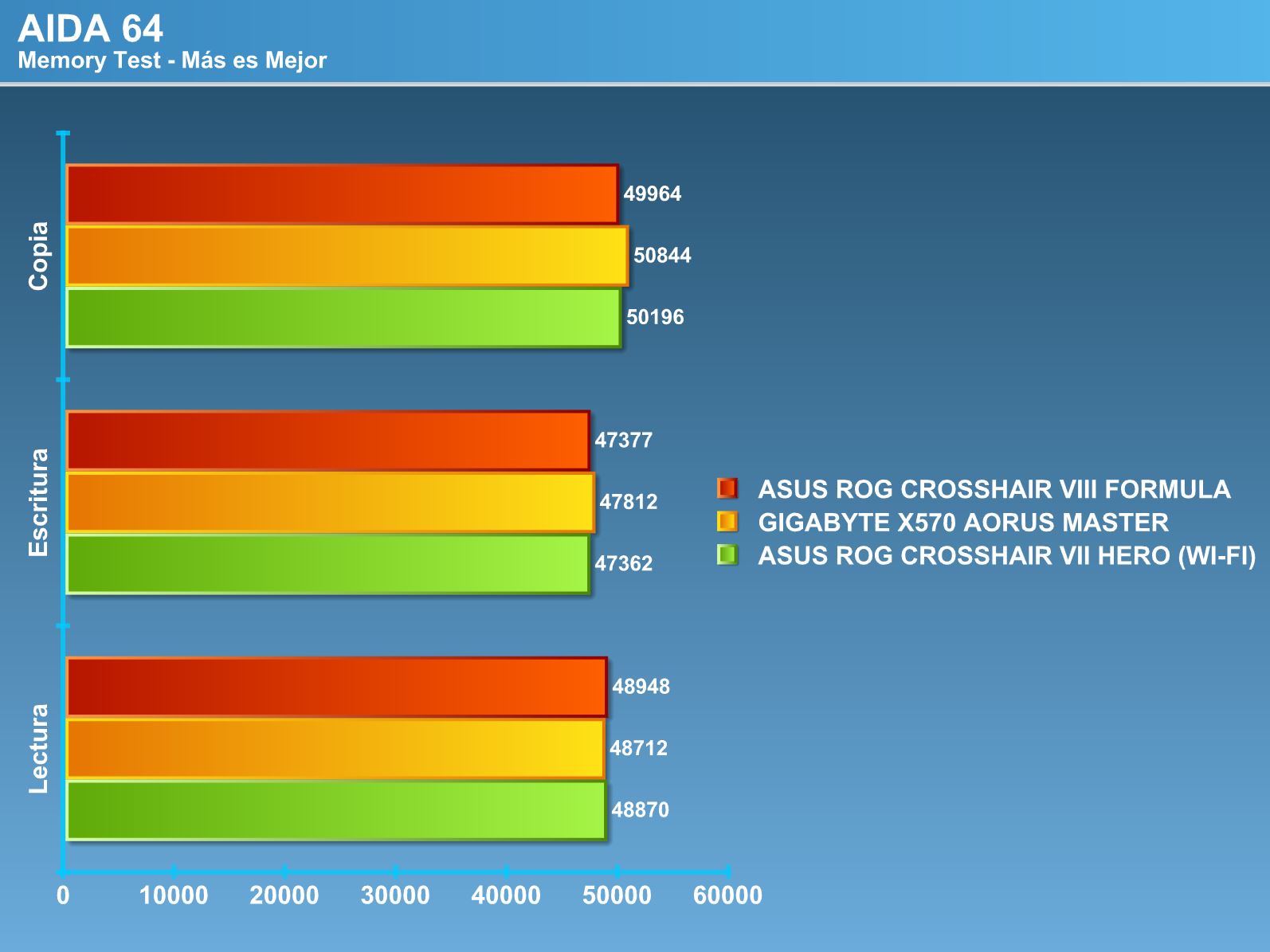
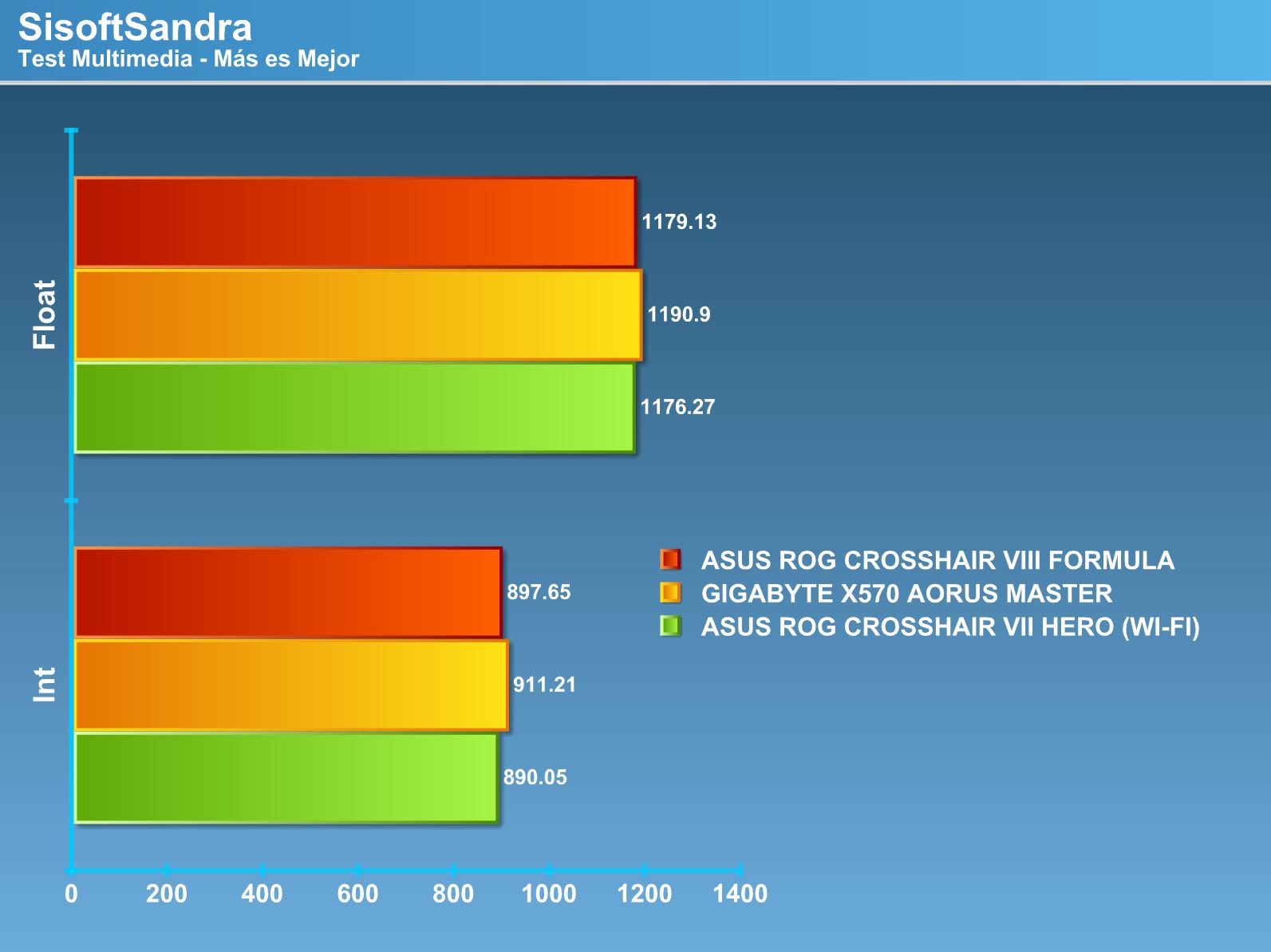
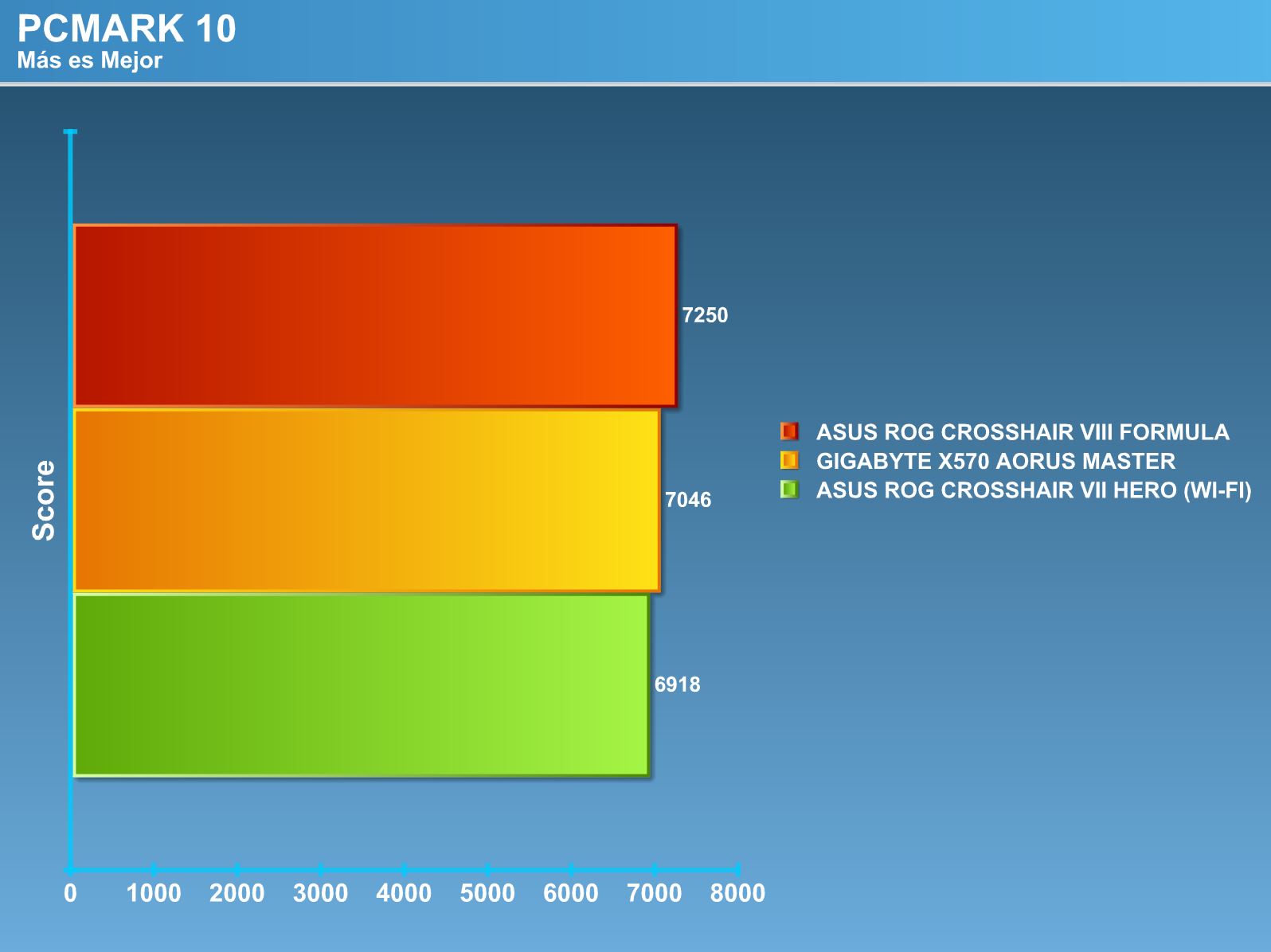
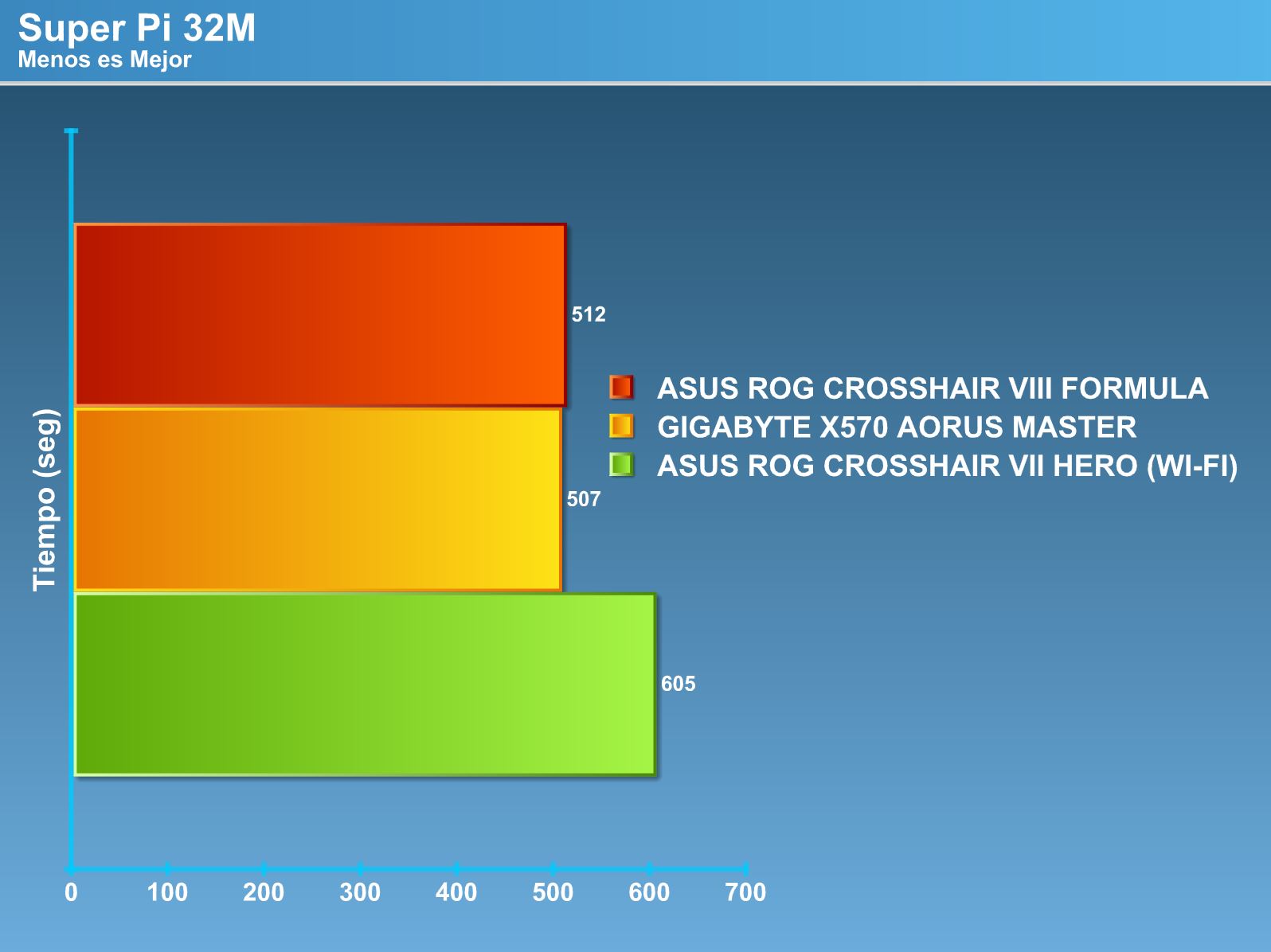
3D tests
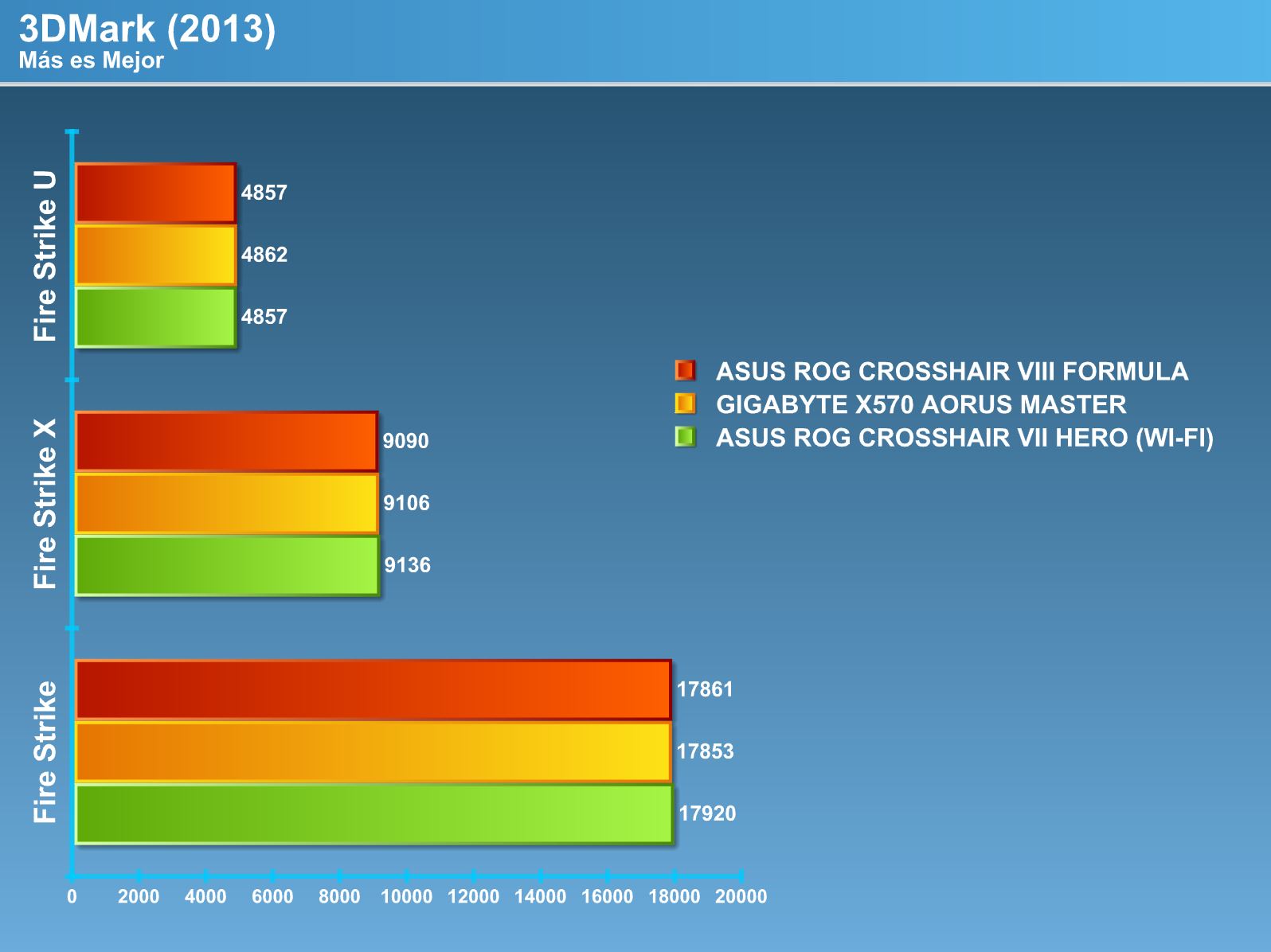
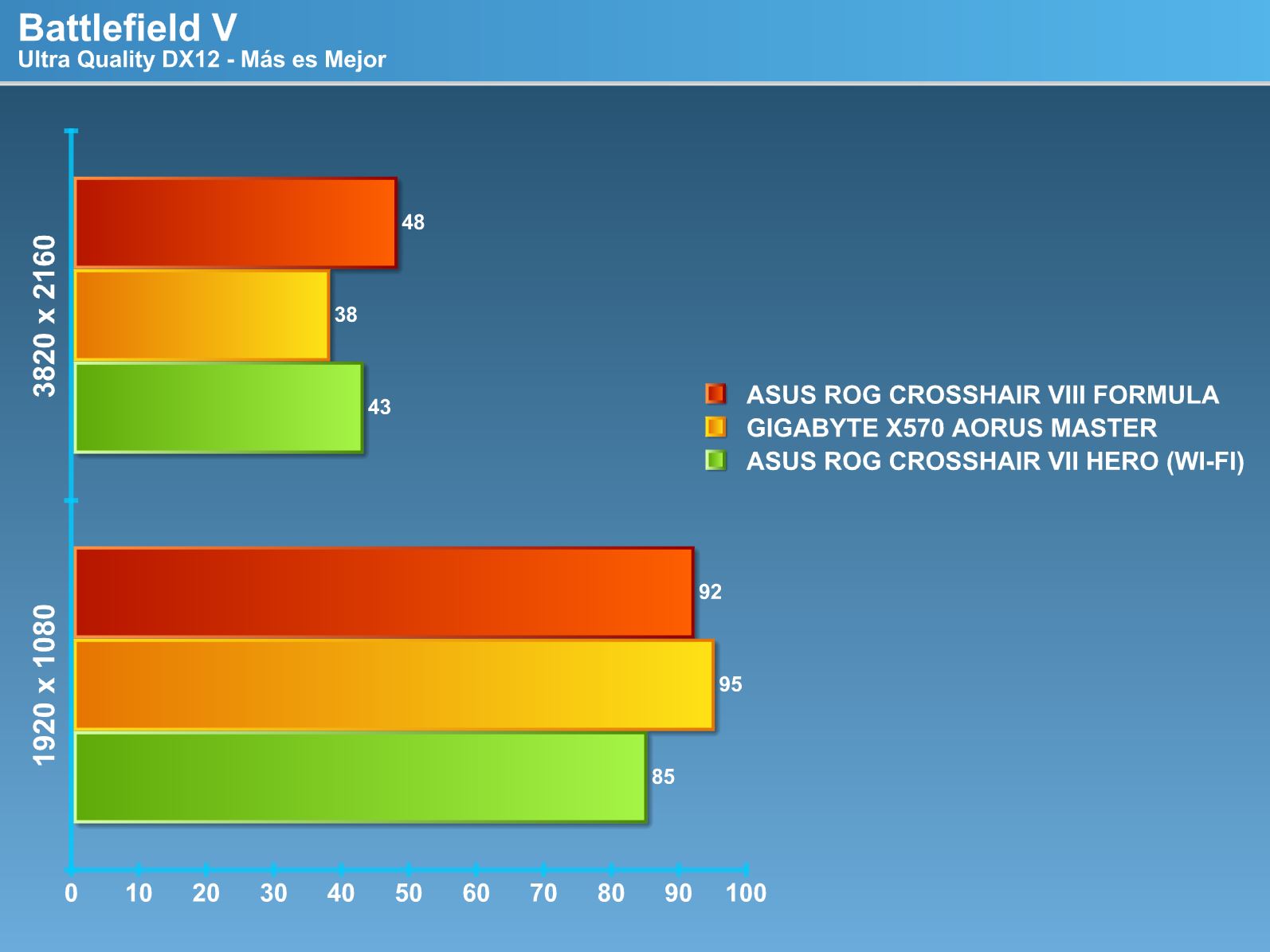
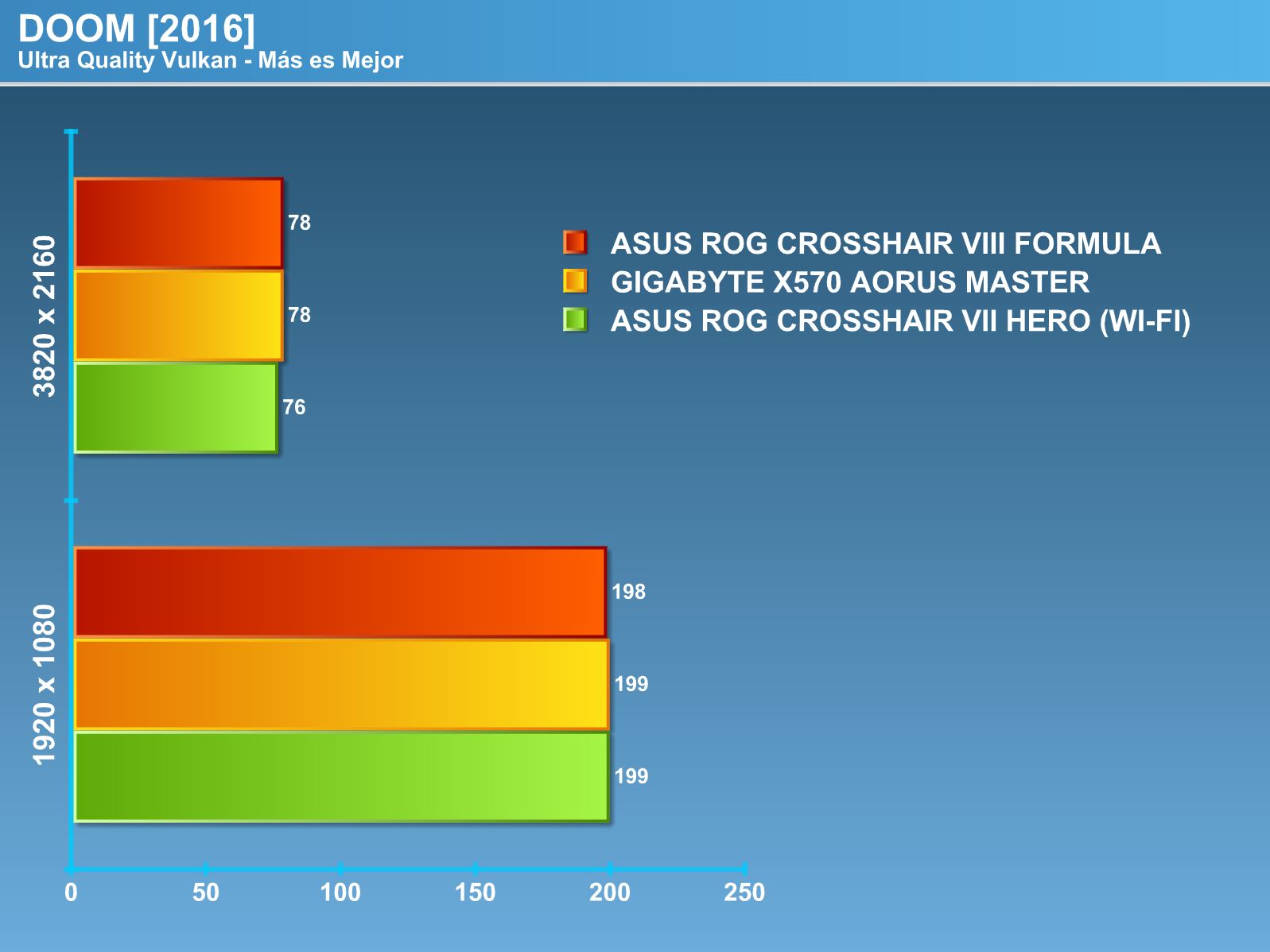
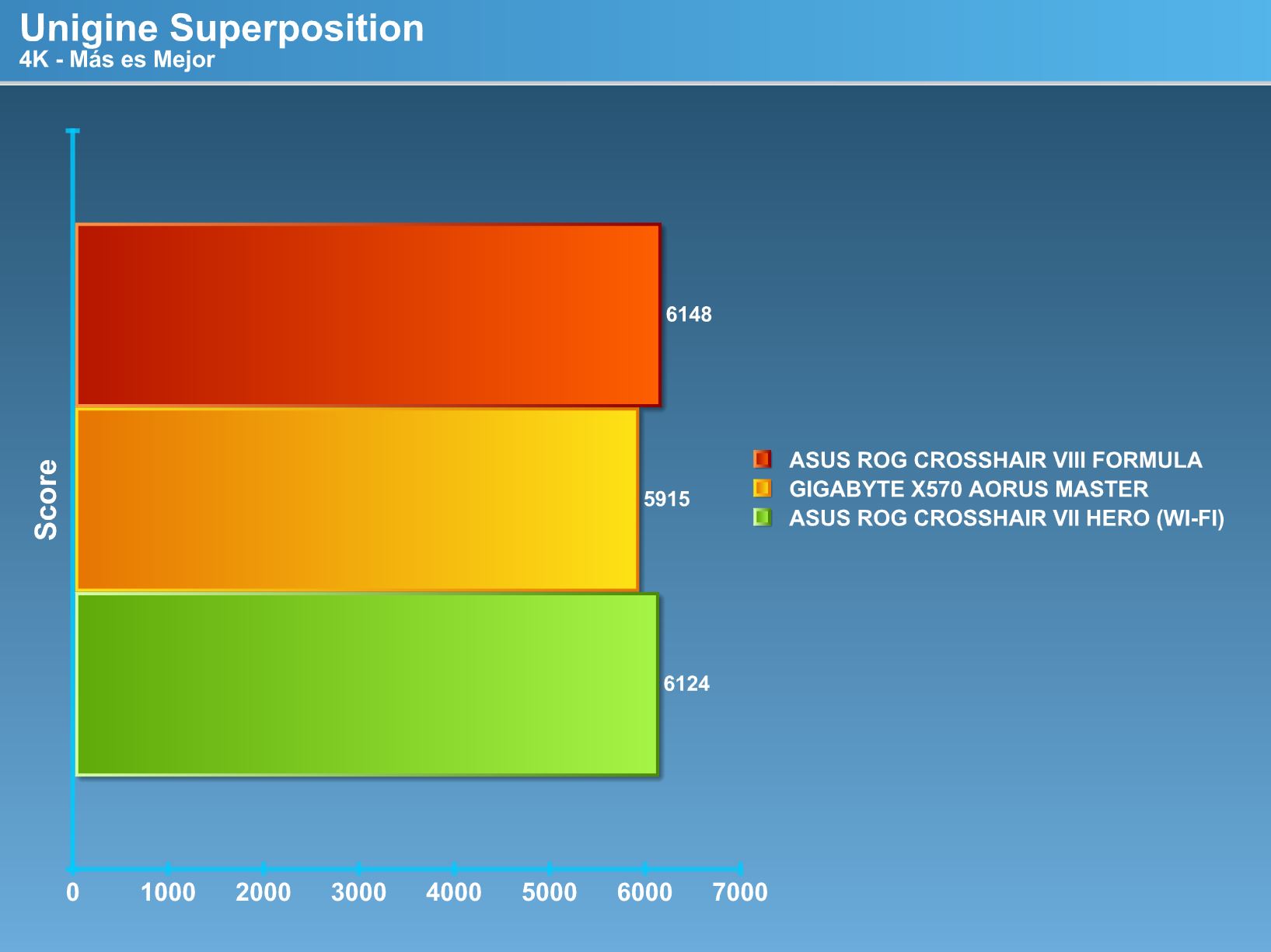
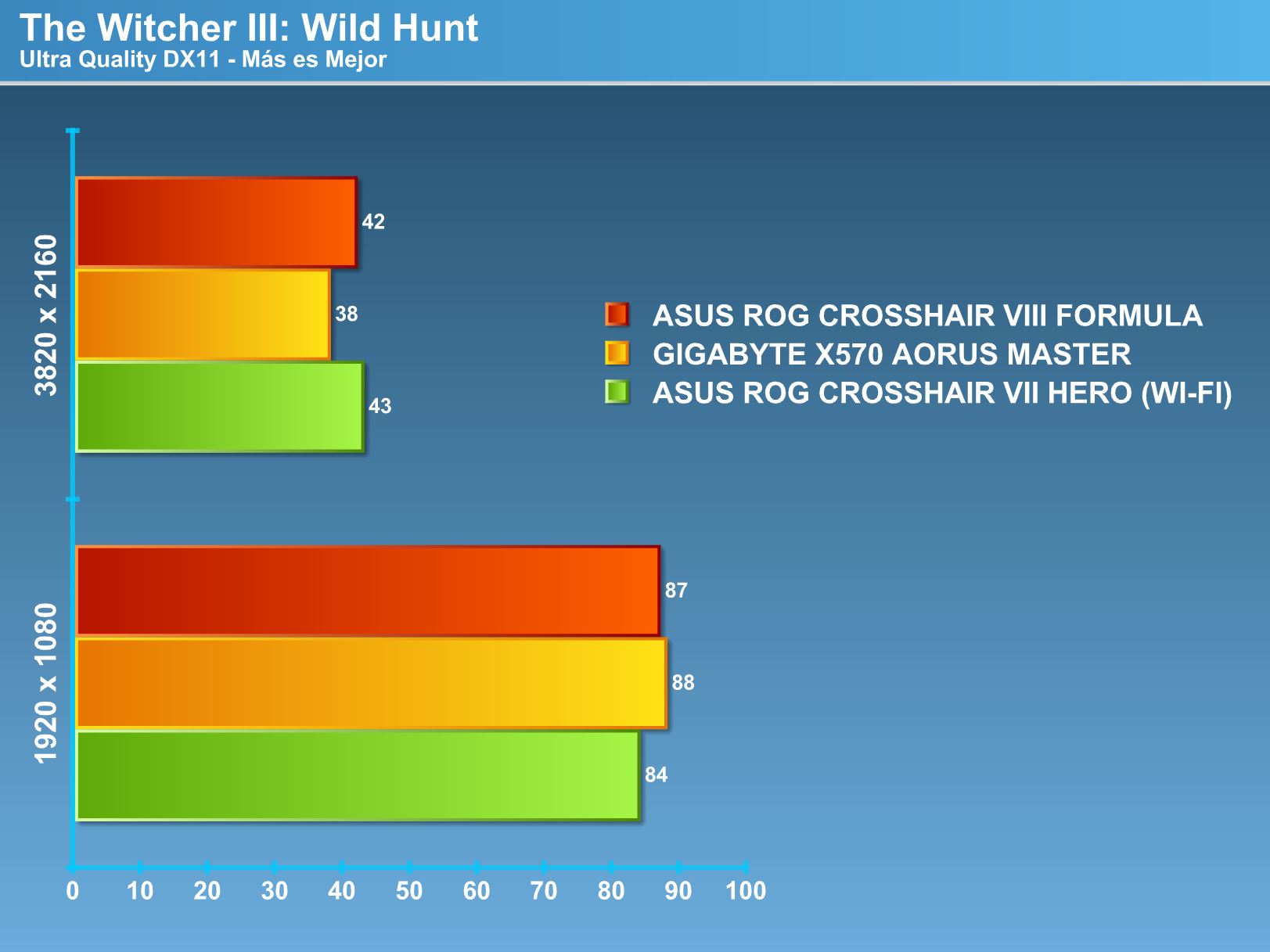
BIOS
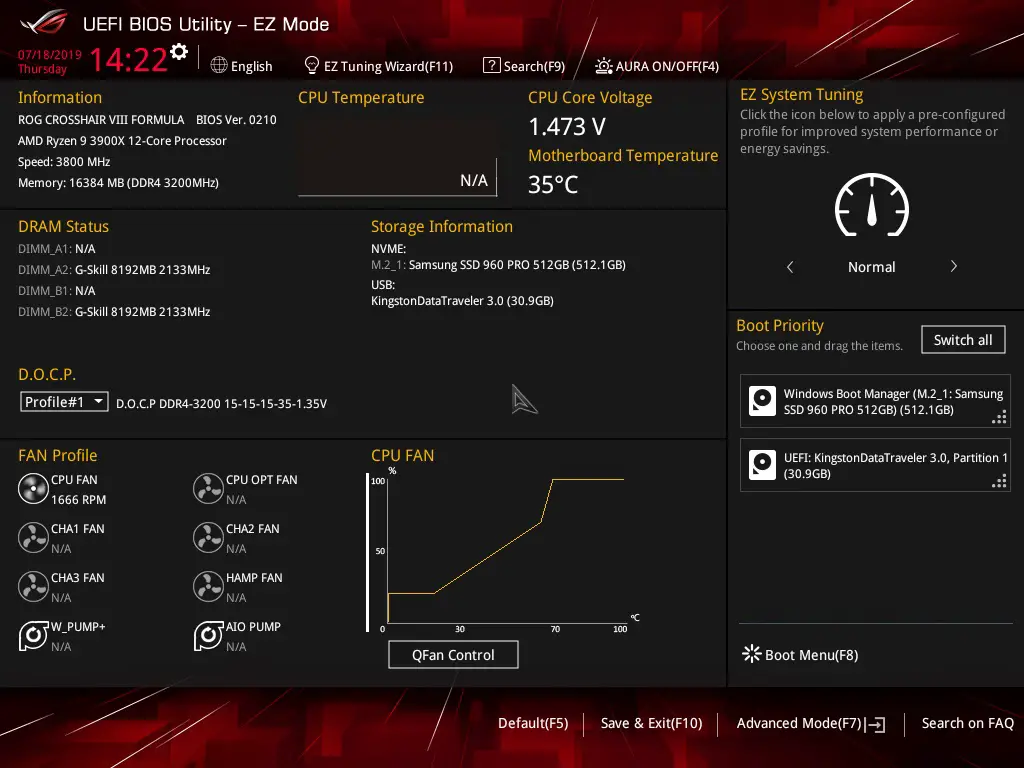
The ASUS BIOS for its ROG models has the same arrangement, in addition to the same theme and / or color scheme, apparently the same BIOS interface as its latest motherboard models.
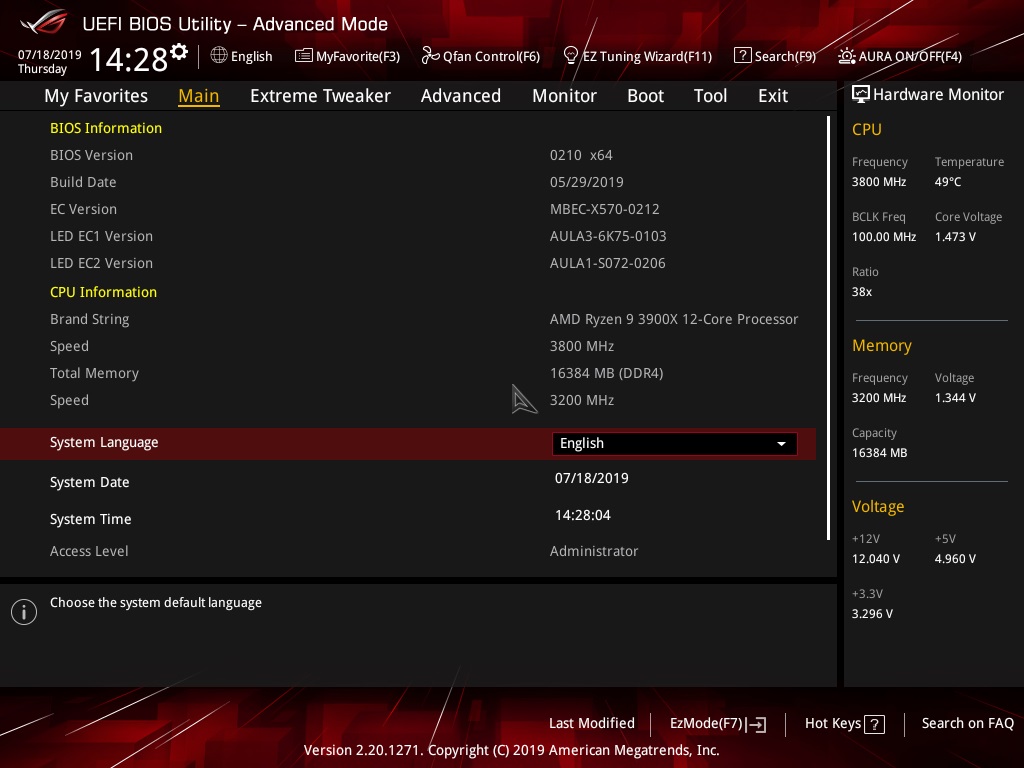
Through “F7” we enter the advanced mode directly, in the Main tab as its name says, some options and / or main information, CPU model, BIOS model, if the current configuration of the equipment.
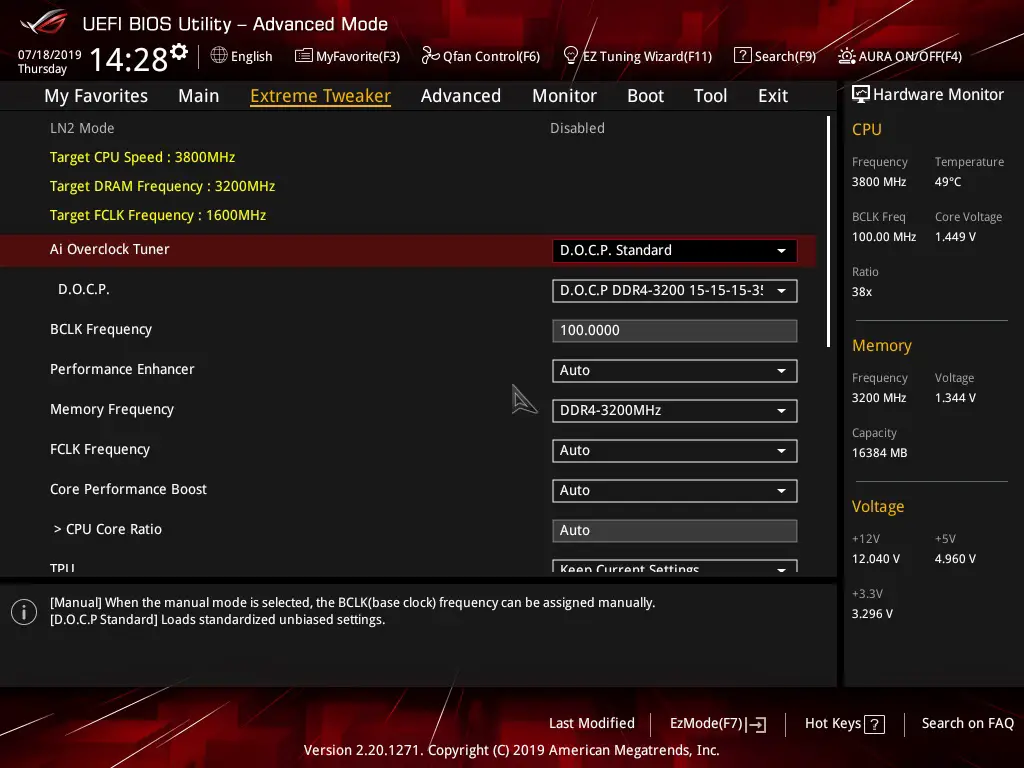
As always one of the densest tabs in this series is that of overclocking, in ASUS called “Extreme Tweaker”, here we will find all the parameters to adjust our overcloking manually, both for the CPU and for the memories.
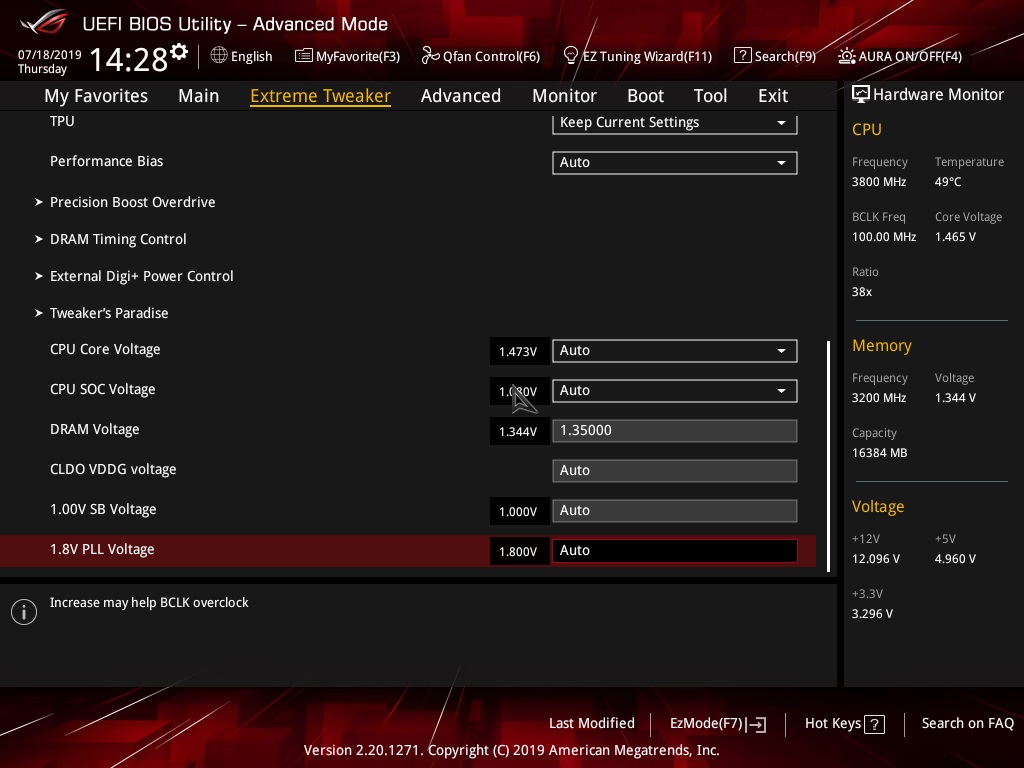
Below we see the section of the voltages to fine tune our overclocking.
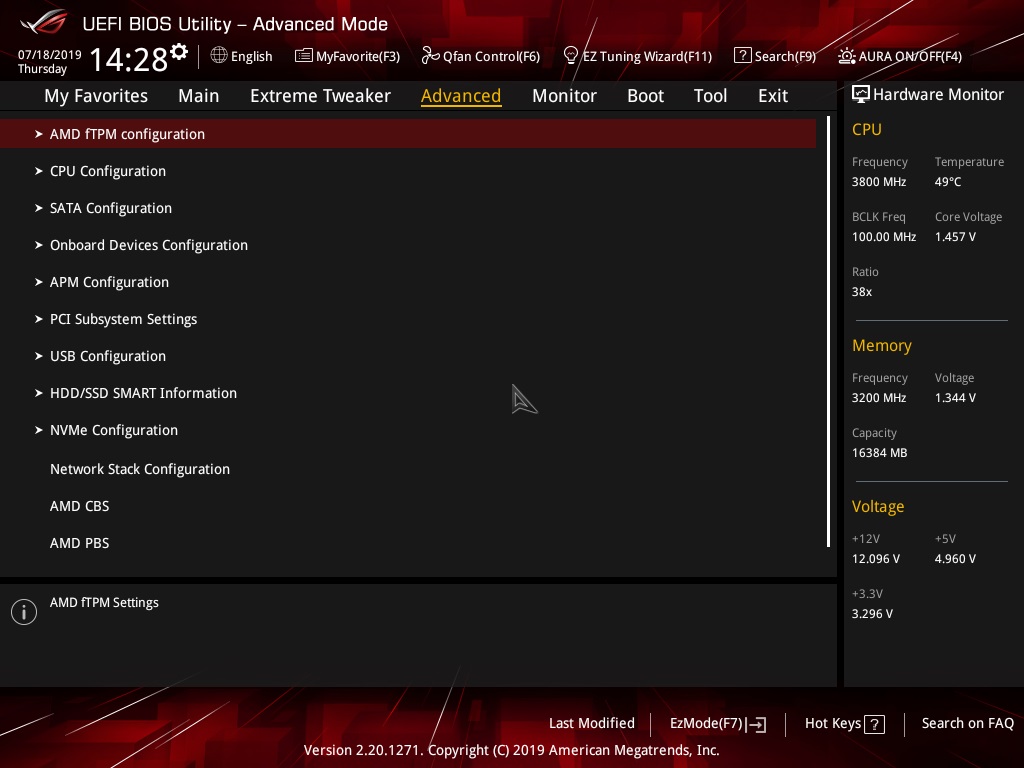
In the “Advanced” tab a series of options that configure the functionality of the motherboard, such as configuration of on-board devices, SATA configuration, among others.
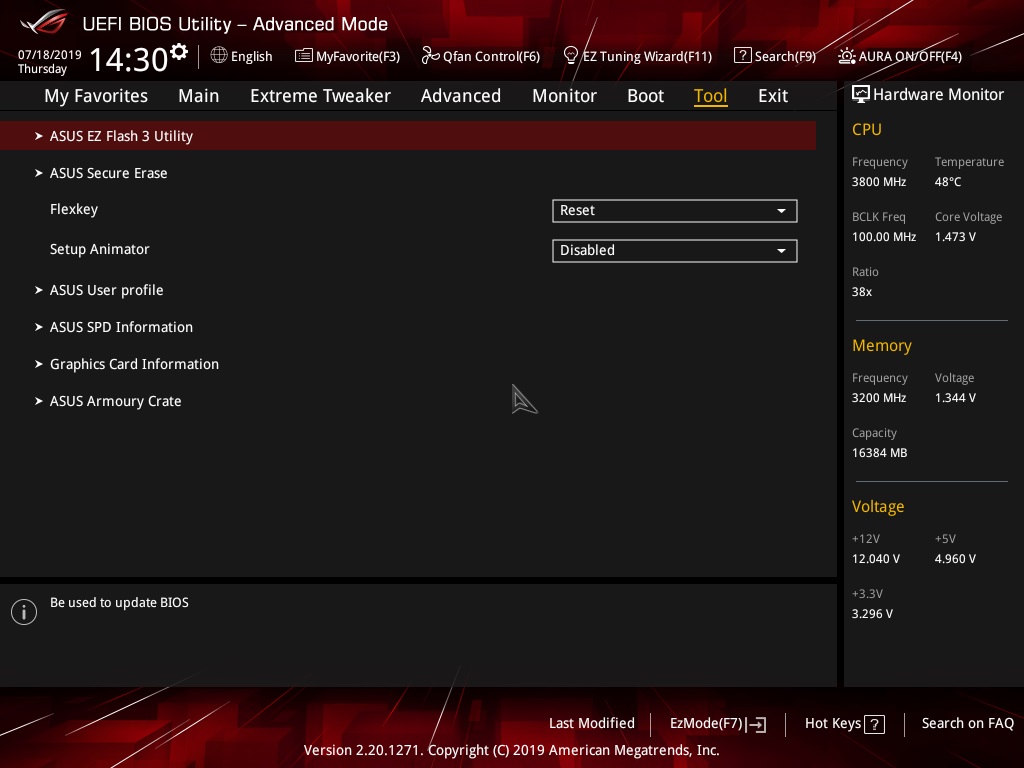
Finally, the “Tool” tab contains some very useful tools such as the “ASUS EZ Flash 3 Utility”
Conclusion.
Like any top-of-the-line ASUS model, its qualities stand out when compared to the competition, always delivering extra values so that the user can experience what an ASUS premium model possesses.
In case the model is very versatile and complete, many aspects have been very well addressed such as the inclusion of an Aquantia 5G LAN chipset, as well as what is the liquid cooling for the motherboard VRMs, sober terminations as a general aspect Motherboard is also remarkable, since in it we can see a complete work from the aesthetic to the functional.
The price is the great factor that does not usually accompany these models, although we know that we are paying for extra elements that we do not see in common motherboards, the difference between the ASUS ROG Crosshair VIII Hero vs ASUS ROG Crosshair VIII Formula model is very wide, even within some North American stores (since it is not available in Chile at the moment), it becomes up to twice as much the Formula model as the Hero, considering that both models bring the main qualities offered by this new AMD X570 chipset who They take practically all of these.
If we can find some differences between models of the same chipset, clearly the lack of maturity of the current BIOS creates certain differences with some models, now when it is compared with the X470 model the difference is even greater, hopefully we will see more finished BIOS to finish these differences
The overclocking session of this model was an aspect that could not be appreciated as it should be, basically because of the limitation that AMD has in this aspect and that basically between motherboards the overclocking does not differ much. If some difference can be seen in memories but it will depend a lot on which model is being used, we should know that the AMD 3000 series has a much more robust memory controller than the previous one and is capable of easily exceeding 4000 MHz frequency in memories suitable for this platform.






![Review ASUS ROG CROSSHAIR VIII FORMULA [AM4 – X570] |](https://www.bitcoinminershashrate.com/wp-content/uploads/2020/01/1580244905_Review-ASUS-ROG-CROSSHAIR-VIII-FORMULA-AM4-–-X570.jpg)









